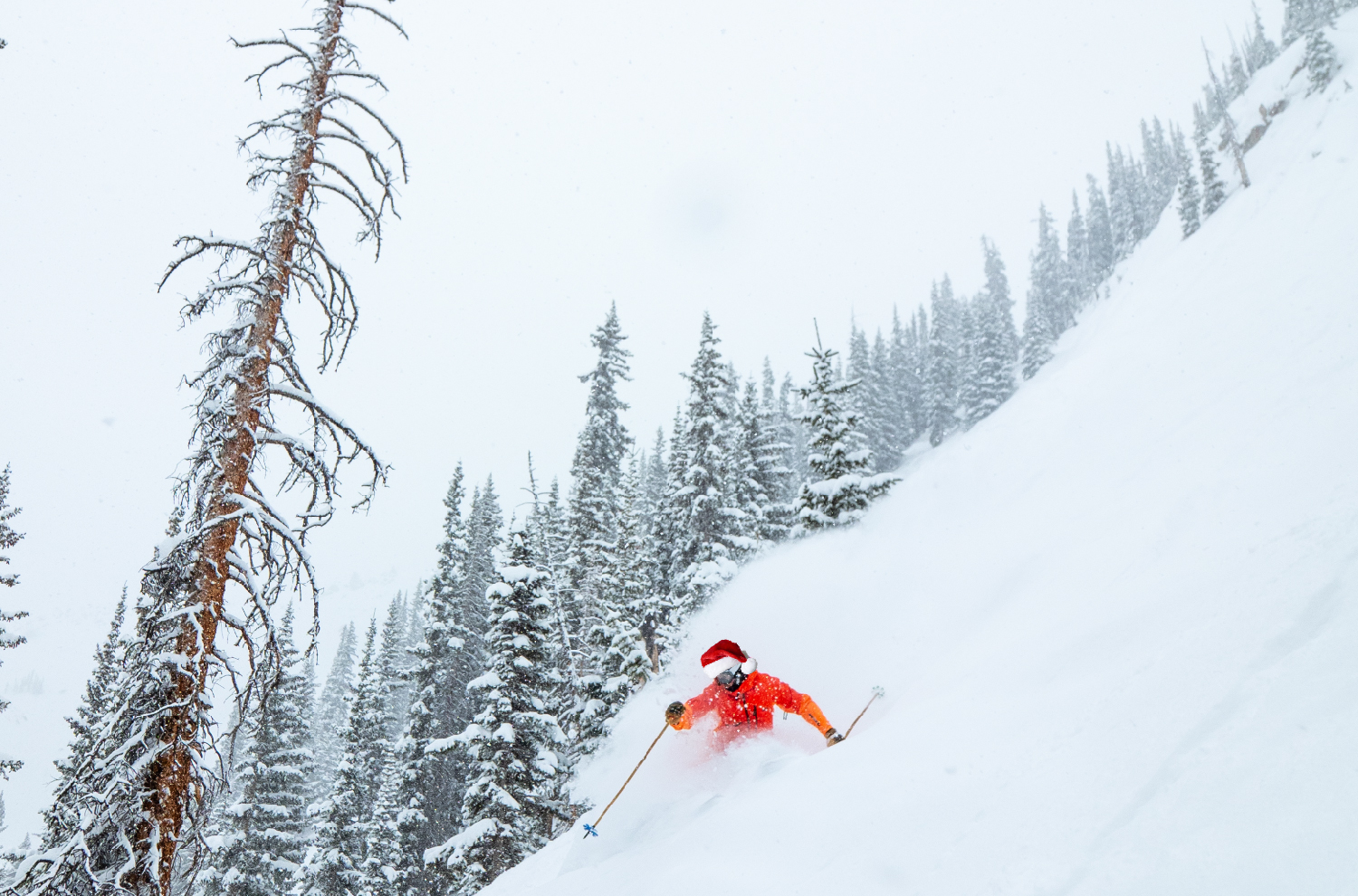
Intro
Following our suggestions for Stocking Stuffers, we’re now looking into gifts that are a bit bigger, probably require some actual gift wrapping, and are sure to ignite the nostalgic excitement of getting to choose a mysterious gift from under the tree.
Suluk46 Yuka 240 Pull Saw
MSRP: $114.95
Paul Forward: At first glance, this might appear to be a niche item. But if someone on your list spends any time trail building in the summer or wants a more versatile saw to carry in the winter, this is the best I’ve found, at least in this length.
It’s pretty widely known that Silky saw blades cut wood better than just about anything out there, but their handles are primarily designed for arborists or other more domestic uses. Suluk46 seems to have realized this and created an ultralight, durable, and comfortable handle that utilizes one of Silky’s excellent (and readily available) Gomboy blades. With this handle, I also find the saw suitable for cutting 30 cm snow columns, earning it a regular place in my guide pack. Those who appreciate cleverly designed handmade gear and have a need for backcountry wood cutting will likely be delighted to find one of these under the tree.
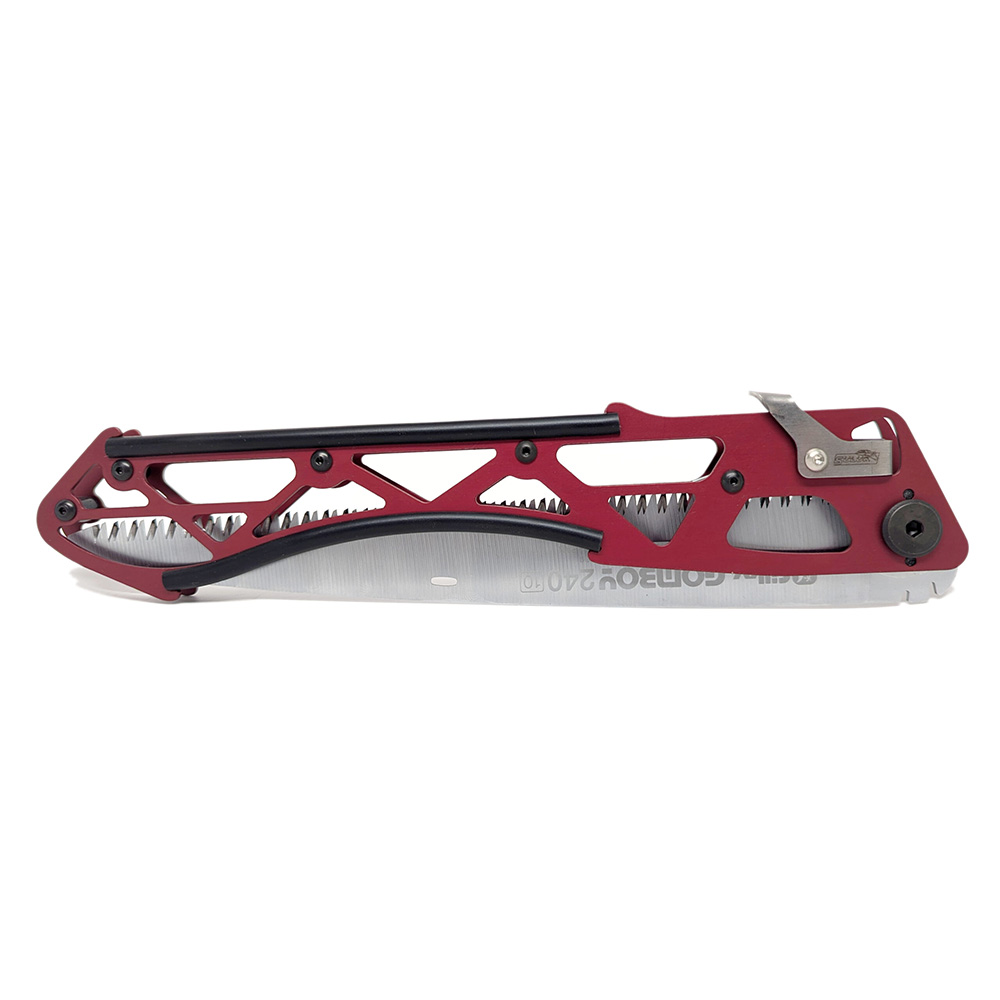
Alpine Revival Cashmere Sweaters
MSRP: $279+
Kristin Sinnott: I have a weakness for cashmere. The soft wool feels so luxurious, and I have collected a handful of cashmere sweaters over the years. But now that I work from home, I don’t find myself wearing them often enough. I tend to reach for them when I need to look nice, and those occasions don’t come up as often as they used to. This is by no means a complaint, although I probably should apologize to my partner, friends, and family for my lack of effort.
My newest cashmere sweater (and my current favorite) is from Alpine Revival. A new company with founders in Crested Butte, CO, and Jackson Hole, WY, Alpine Revival creates high-quality, vintage-inspired ski sweaters that don’t look out of place in the locker room, on the hill, at home, or out for dinner. Their colorful and retro-inspired designs are fun and functional.
I have the Women’s Granite Crew in a Medium; the fit is ideal for my 5’8”, 135 lb (172 cm, 61 kg) frame. The fit is flattering and there’s plenty of room for a baselayer underneath. I love that the design is a nod to the past.
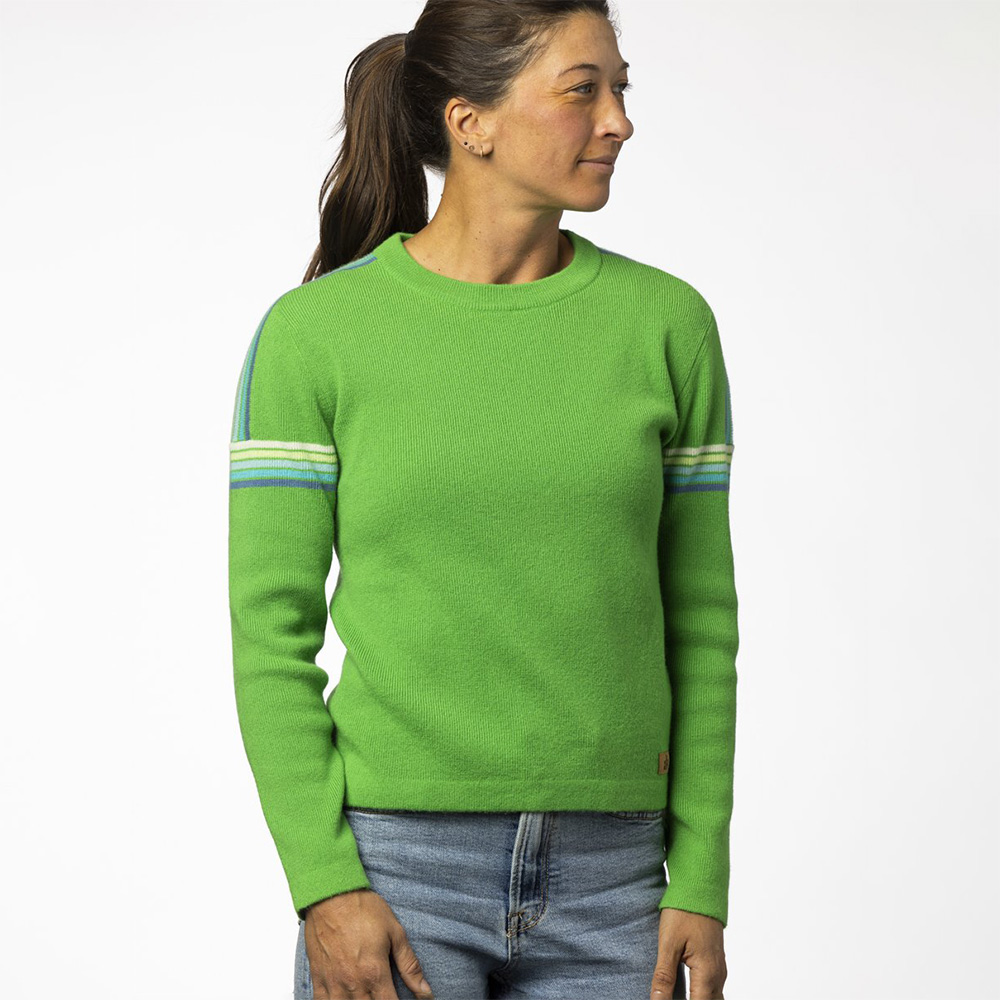
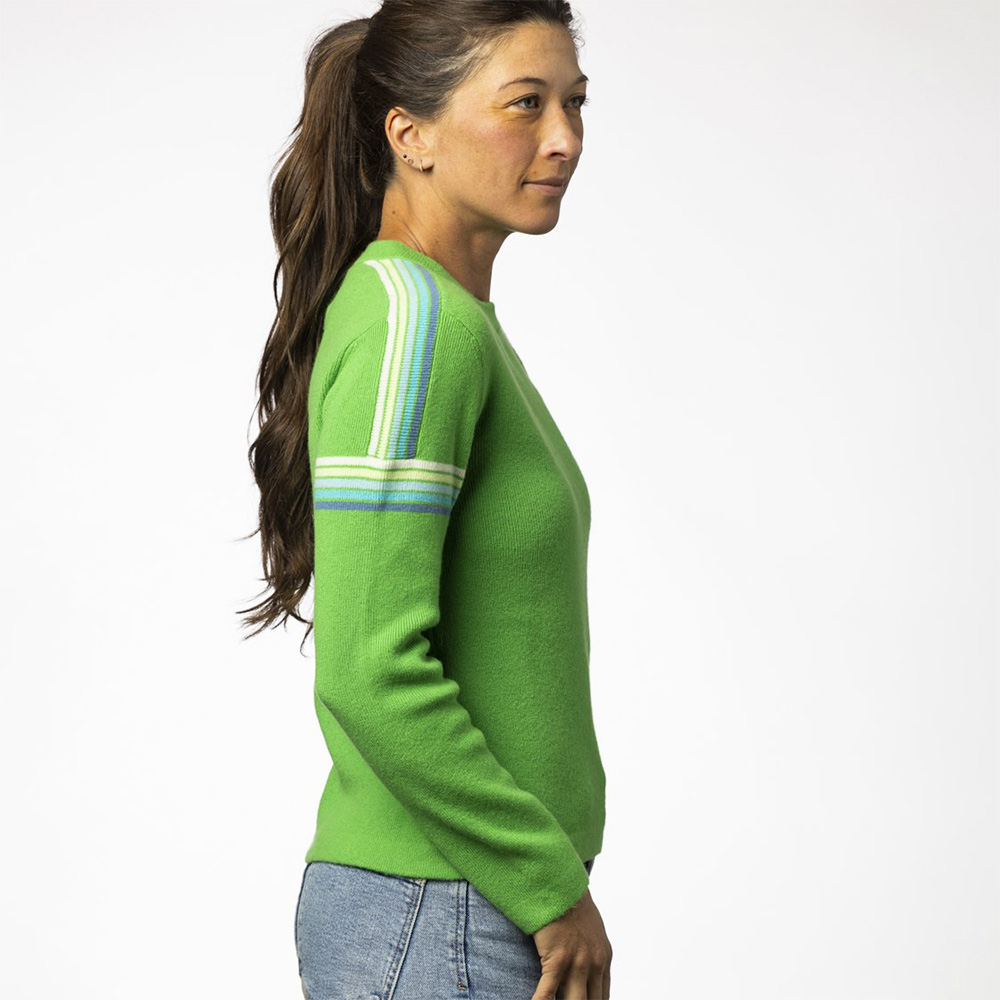
I remember sitting in the base lodge as a kid and seeing a lot of skiers rocking the sweater that inspired this design. Those old sweaters looked cool, but they were nowhere near as soft. The Granite Crew brings back happy memories whenever I wear it.
If someone on your list could use a little nostalgia in their life and/or appreciate a nice sweater, check out Alpine Revival’s line of men’s and women’s sweaters.
Grand Trunk Monarch Chair
MSRP: $69.95 USD
Zack Henderson: Call me a diva, but I love having a chair while backpacking. Sure, they add arguably ‘unnecessary’ weight, but on bigger trips, there’s something very, very satisfying about plopping down into a chair after a long day carrying a pack.
I’ve had my Monarch Chair since before Grand Trunk made it — it was previously made by a company called Alite. While Grand Trunk now owns the design, it’s the same awesome chair. It’s quite light at 1.3 lbs / 0.6 kg, and while there are some lighter chairs out there, this one has stood the test of time without ever feeling flimsy.
The most polarizing aspect is the fact that it’s a rocking chair, only having two contact points with the ground. That means that your feet on the ground provide stability. However, compared to other chairs that rely on a very small base for stability, the Monarch Chair’s large rubber feet and two contact points mean you can sit just about anywhere without worrying much about uneven ground. For someone like me who struggles to sit still for long, the rocking functionality is awesome, too.
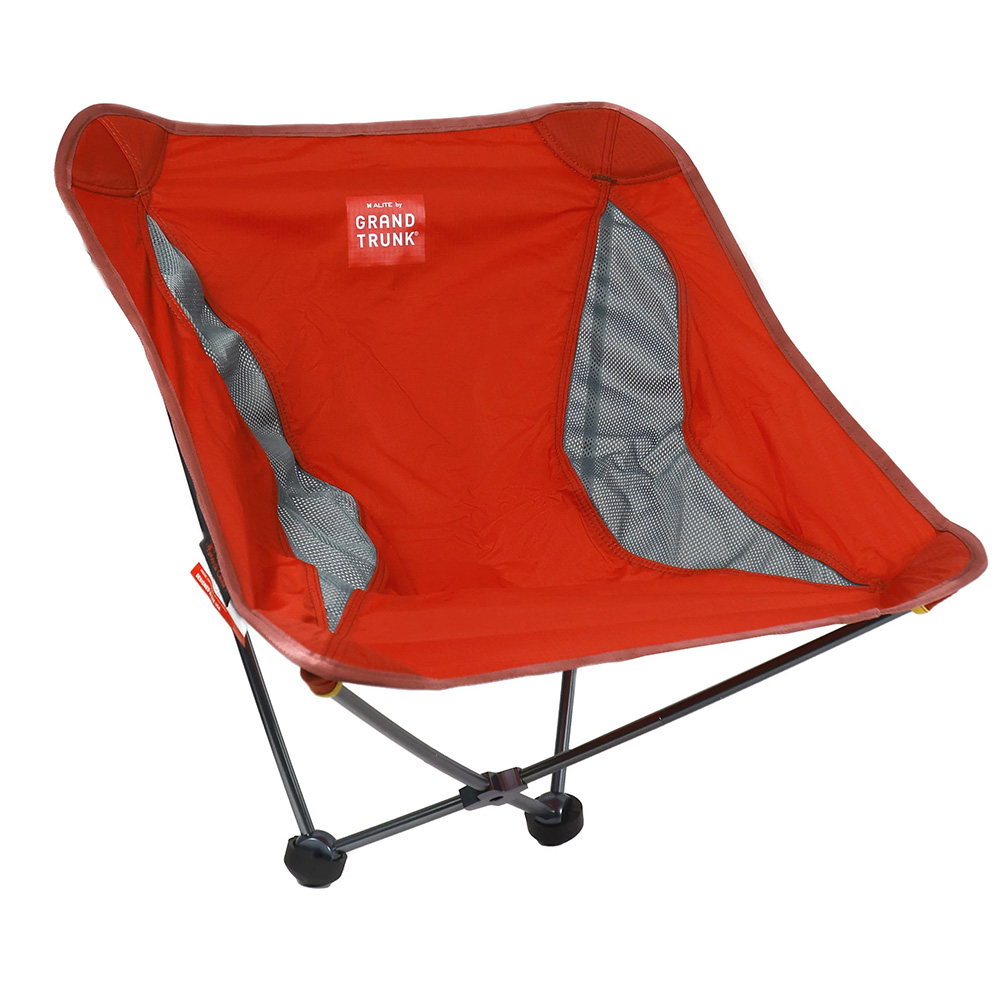
At $69.95, it’s actually a lot cheaper than other backpacking chairs, and it can be found for cheaper with some online hunting. It won’t be for everyone, but if the sit-anywhere versatility of the rocking chair design sounds appealing, the Monarch Chair is a worthwhile investment in comfort.
Glerup Boot with Leather Sole
MSRP: $130
Kara Williard: I always have to have a pair of cozy, warm, and comfortable shoes or slippers to wear around the house. Over the past couple of years, I’ve tried several different pairs, and this year, I have a new favorite: the leather-sole version of Glerup’s Boot.
Glerups build indoor and outdoor shoes, most of which utilize a wool felt upper, and they offer leather or rubber sole options, depending on your preferences and how you want to use them. For the past month, I have been wearing their Boot option with the Leather Sole, and I have found them to be warm, comfortable, and supportive. The rubber-soled version would definitely be the better option for someone who wants to wear their boots outside the house, but the leather version is a great indoor option.
This boot tops out right around the ankle and easily slips on and off (I can do so without using my hands, which is great). It broke in rather quickly, and now I find it extremely comfortable, with or without socks. Glerups recommend wearing the boot without socks for the first few days so it can shape to your foot.
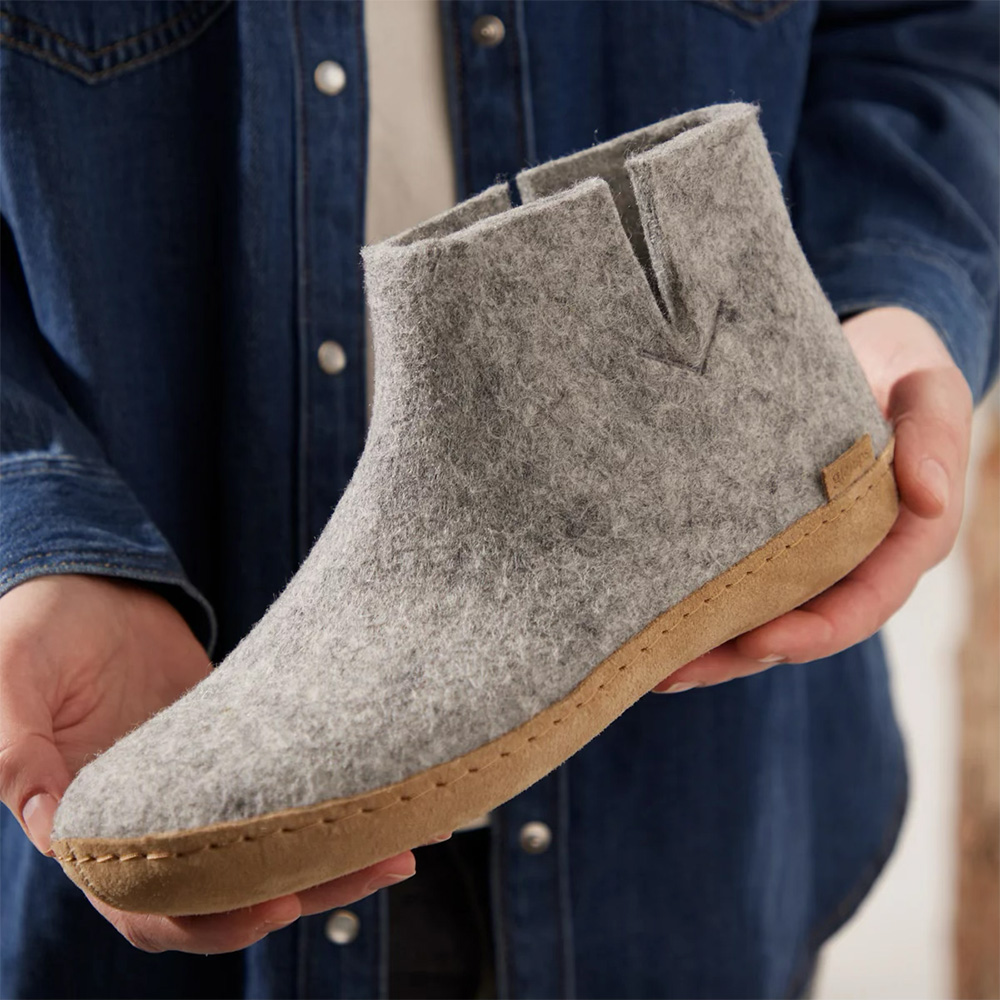
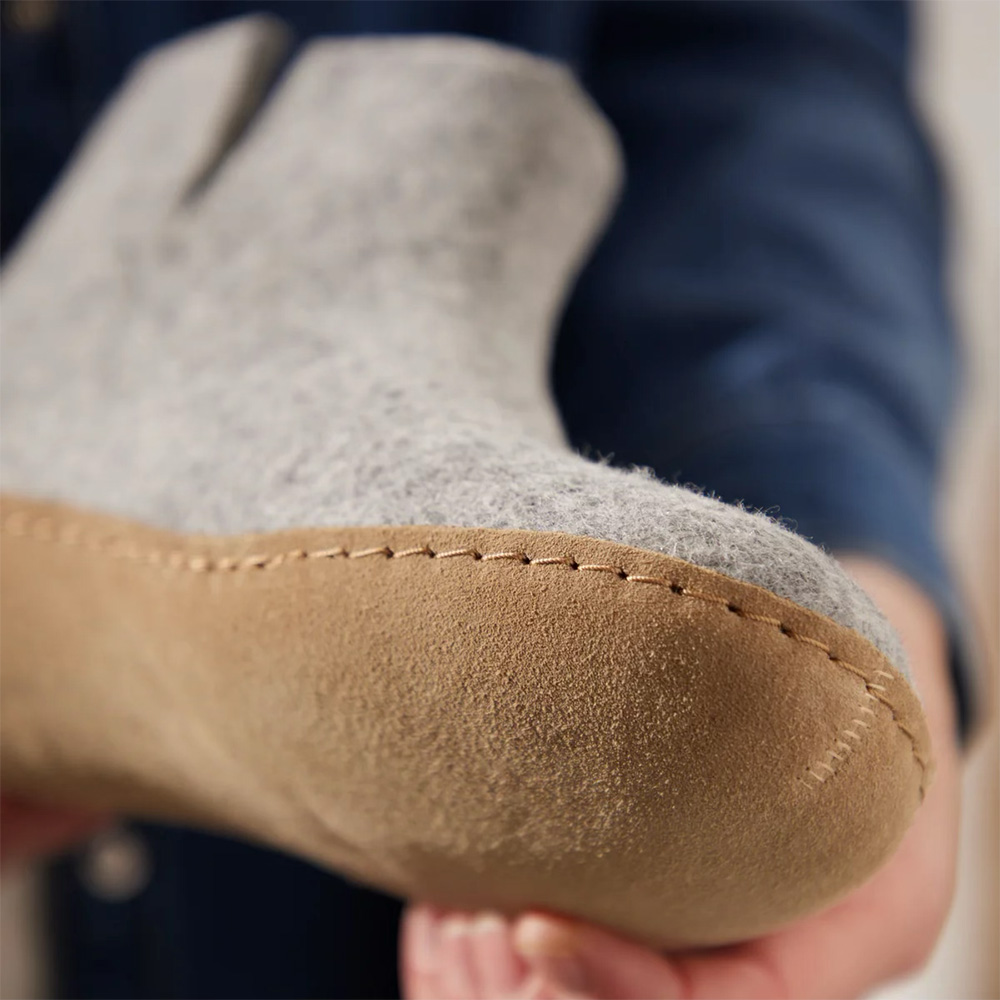
After that break-in period, these boots offer pretty good, natural support (more than the average slipper) and feel well shaped to my foot. If you have someone in your life who appreciates warm feet and supportive footwear in or out of the house, I’d recommend checking out Glerups assortment of felt shoes and boots.
Kristin: I have been wearing the slip-on, leather-sole version of the Glerups for the past 7 years. The heel finally ripped out this past spring; as slippers go, that’s a very good run. As I look to replace them, the boot version is high on my list (and might eliminate the heel-ripping issue), as is the Birkenstock Zermatt Shearling slipper. While I never had any issues with the insole design of the Glerups, I’m a fan of Birkenstock footbeds.
Terrible Beauty by Auden Schendler
Jonathan Ellsworth: I mentioned this book on a recent Reviewing the News episode, and if I could get everyone in our Blister audience to read one book about climate change — and the things we should be doing to improve our circumstances while also avoiding empty gestures that don’t improve our situation — then this is the book. It’s beautifully written, it provides much food for thought, and, importantly, it’s actionable. My suggestion: get a copy for yourself, gift a copy to some people in your life, and then commit to discussing the book together.

COROS Dura Bike Computer
MSRP: $249 USD
Zack Henderson: I reviewed the COROS Dura this past summer, and it has remained a fixture on my bikes long since the review wrapped up. It wasn’t the most polished product when I first got it, due to some flaws in the underlying UI and software. However, COROS has continually released software updates over the course of the past several months, and all of them have continued to refine the Dura’s user experience.
The biggest selling point of the Dura is its insane battery life. To date, I’ve still only had to charge my Dura a handful of times despite using it multiple times per week. COROS claims 120 hours of battery life using single GPS activity tracking, and I’ve found that to be roughly in line with my experience. In a world where it feels like I have to remember to charge so many things in my life, it’s nice having a cycling computer that I can largely leave on my bike and not worry about for weeks (or even months) at a time.
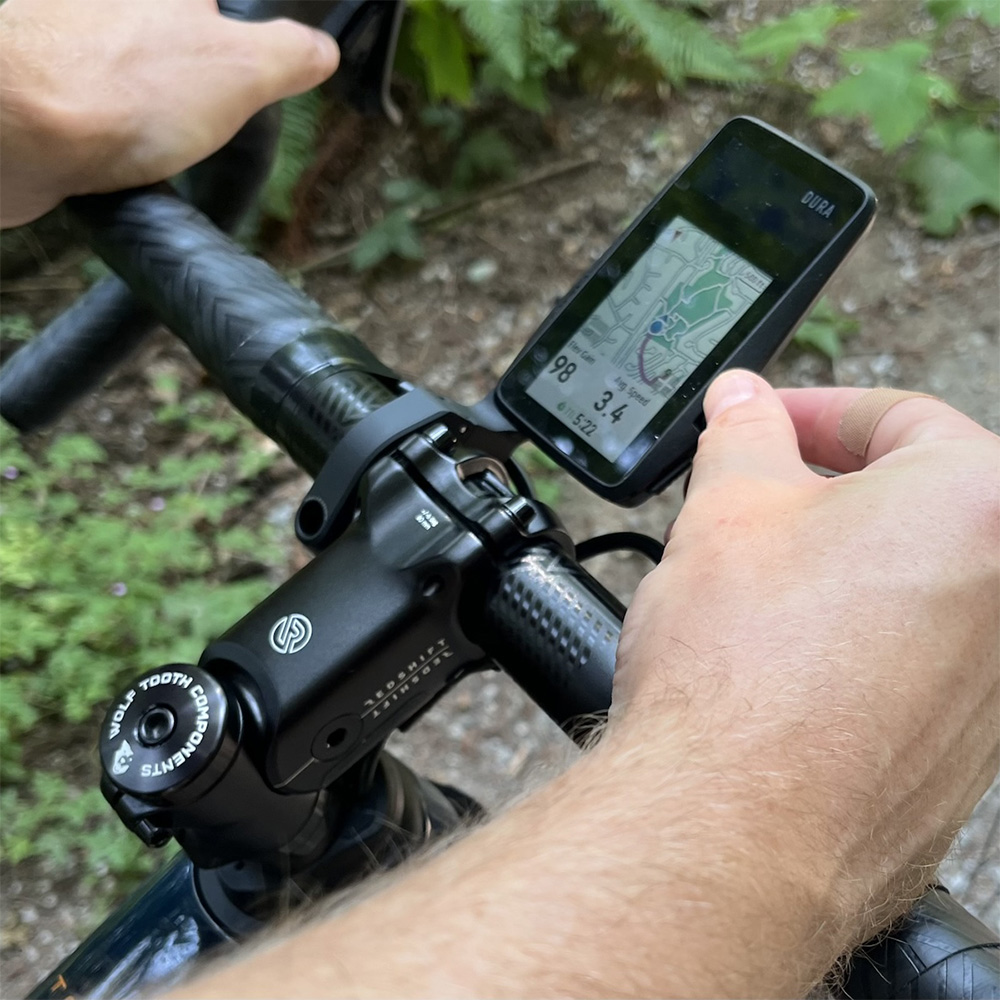
COROS has continued to improve the mapping functionality, and while it’s still not perfect (I mostly wish it integrated with TrailForks), it has gradually gotten far better at supporting downloaded routes and in-app route planning.
For $250, the Dura undercuts many competitors on price while also being a more set-and-forget option thanks to its battery life. I still wish it had tactile buttons rather than the digital dial, and I’ll continue to lobby for TrailForks integration since it’s useful for riding in new areas. Those nits aside, the Dura is a great option for riders looking for a low-maintenance way of tracking cycling data.
ButtnSki OG Shorts
MSRP: $78
Kara Williard: Earlier this year, I wrote about my new favorite pair of shorts: ButtnSki’s OG Shorts. After more cold days and a whole lot more time in them this spring, summer, and fall, I still am a huge fan of these insulated, fleece-lined shorts — especially after layering them with my baselayer pants during a freezing outing at Wolf Creek the other day.
ButtnSki is a relatively new company that manufacturers their apparel in Los Angeles, California. The OG Short is one of their main staples. At first, I was a little skeptical about the necessity of a fleece-lined pair of shorts, but they arrived just in time for spring skiing, and I was quickly sold on the concept.
The OG Short is a great option for keeping my butt warm without having to wear a full-length baselayer pant (which often make me overheat in the spring). When it was windy or I ended up sitting on the snow waiting on friends, the OG short offered the perfect level of warmth and insulation. But I also found it easy to cool off when needed, especially if I opened up the thigh vents on my ski pants.
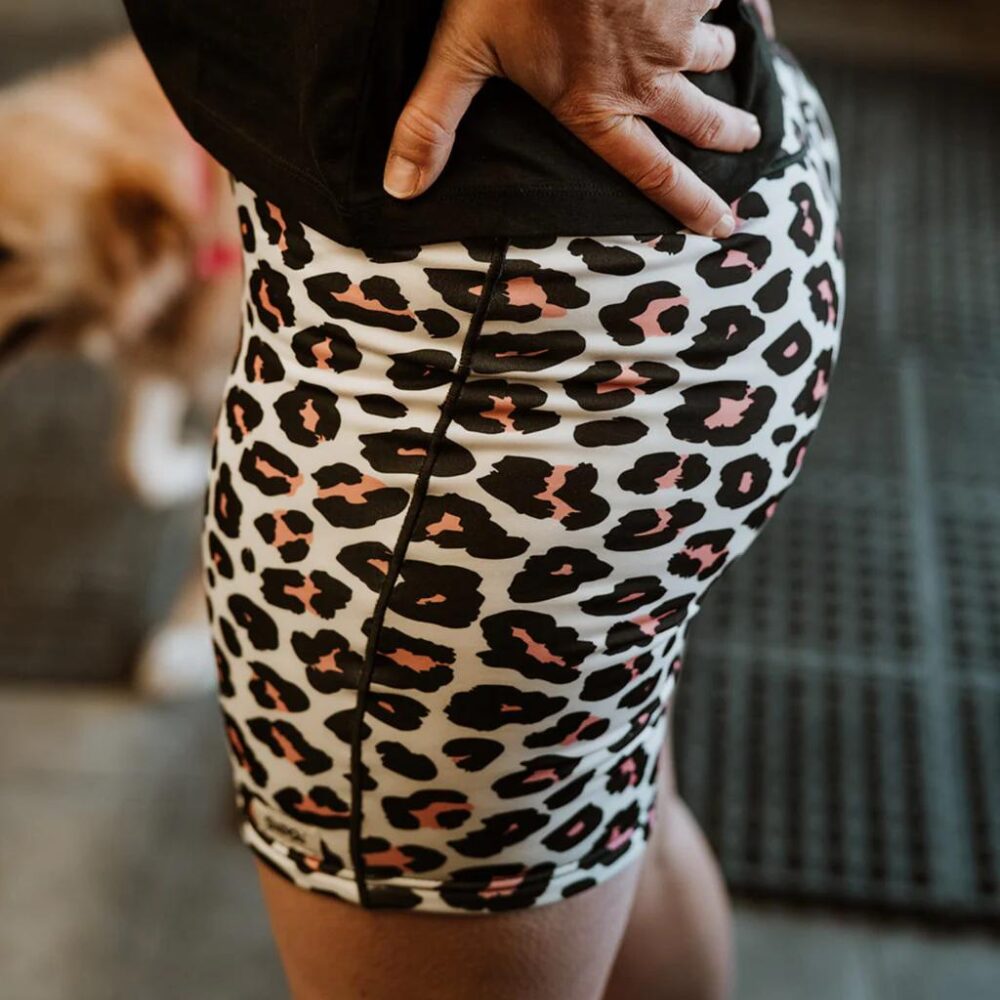
The OG Short is also just really comfortable, and now I find myself wearing them all the time, including at my house. The fleece interior is soft and feels warm and insulating, especially against a cold surface, but it’s also pretty light and breathable. The shorts themselves are very stretchy and cozy.
They have a wide, yoga-style waistband and the material is very stretchy / non-restrictive; it also hasn’t stretched out much so far, even after wearing them multiple days in a row.
I have been wearing a size Large, which has offered a great fit for me (5’9”, 170 lbs / 175 cm, 77 kg), but I can still layer them over a wool baselayer for cold and blustery days when I want some extra warmth around my butt.
All in all, I have found this warm and cozy fleece-lined short to be a lot more versatile and useful than I originally thought, and it’s a great layering option for someone in your life who likes to play outside in the cold but wants to stay toasty!
Mama Noah’s Potato Latkes
Noah Eckhouse: As someone who doesn’t celebrate Christmas, I like to find other ways to experience the holiday season. Besides empty-mountain skiing on Xmas morning, we have made fried potato latkes an institution in our house. The LLR (or “latkes loss ratio”) for this recipe often exceeds 50%, as these steaming orbs of goodness tend to go right from fryer to mouth before being formally served on the table.
My recipe is simple, proven, and tasty: you need the potatoes, but also onion and lots of garlic. Don’t grind the potatoes; rather, make like a rider and SHRED them, then mix with your bare hands and deep fry in an oil of your choice (the lighter the better). Properly done, they take about 2 minutes per side to fry. Make them in little hand-formed patties not more than 1/2” thick. Oil should be hot but not smoking in order to fry to a deep, crispy brown. When they emerge from the pan, place on a metal rack or paper towel to drain. Keep ketchup far, far away from these.
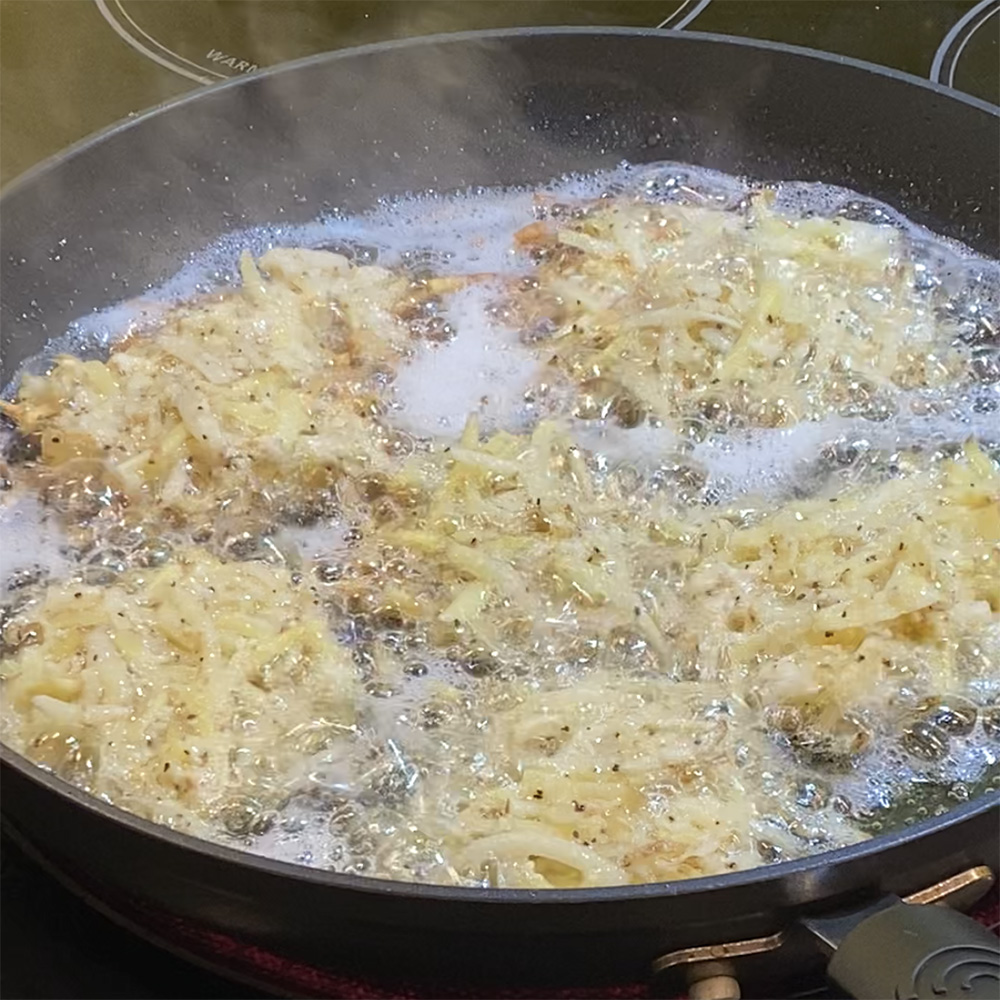
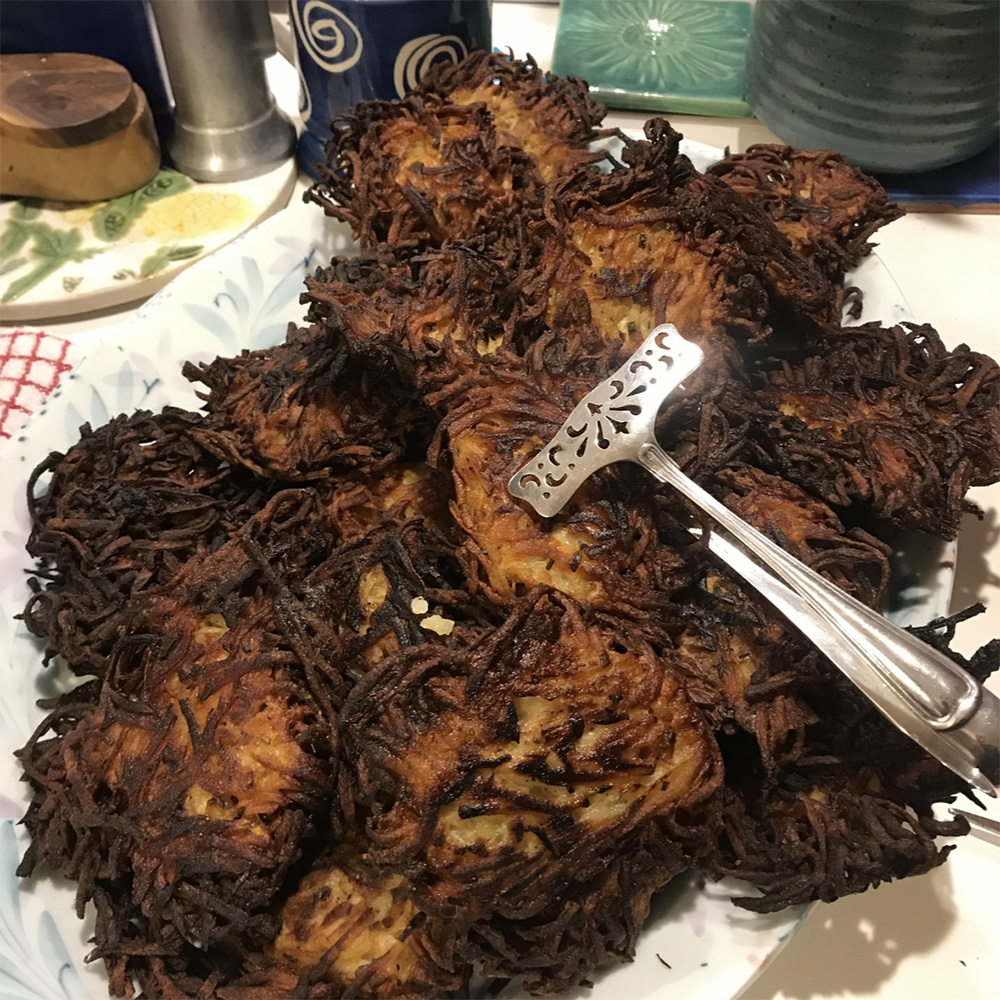
Ingredients:
3 pounds russet potatoes, washed with skins on
1 large Spanish onion
2 eggs
1/2 cup matzoh meal
2 Tablespoons garlic (more is always better)
Salt and Pepper to taste
Formal Directions:
Shred potatoes by hand with a grater or with a food processor (go for the coarse-blade option). After shredding, soak potatoes in a bowl of cold water (add ice) to rinse away excess starch. Add a dollop of white vinegar to keep from turning brown. Let soak for at least 15 minutes, but an hour is fine. Then drain fully and place in a mixing bowl.
Finely dice the onion. Add to potatoes, along with all the other ingredients. For mixing, you can try a spoon, but your bare hands work best. Get into it with love and commitment. The resultant mixture should be gooey but not too thick.
Preheat frying pan with 1/2” oil and commence the infamous “test batch.” Fry both sides to a golden brown and selflessly volunteer to test a few latkes. Adjust as necessary (you will probably have to add salt) but more matzoh meal will keep them together if they fall apart. Enjoy! (And if you do make these, drop a comment below!)
Vermont Glove – The Vermonter
MSRP: $115
Kara Williard: You’ll often find me digging bare-handed through the dirt doing a bunch of miscellaneous tasks around my farm, and I really don’t like wearing work gloves all that much. But as soon as temperatures drop, gloves become a necessity for things like splitting and stacking wood, dealing with chicken chores, and digging in the winter garden. The Vermont Glove Vermonter is the best glove I’ve found for these tasks. It’s durable and warm but still offers great dexterity, meaning I can do a lot without having to take my gloves off, which is key.
The Vermonter becomes more comfortable as you break it in. After a lot of use over the past eight months, it has become very supple and soft, but it is still extremely durable. For an extra $25, you can also get a wool glove liner for improved warmth. All Vermont Gloves are built in Vermont with 100% Goat Leather. They also make gloves for skiing, warmer work-oriented options, and more. You can also re-condition the gloves to maintain their water resistance over time.
I recommend checking them out if you know someone who appreciates good gloves, USA craftsmanship, and a product that will last a long time.
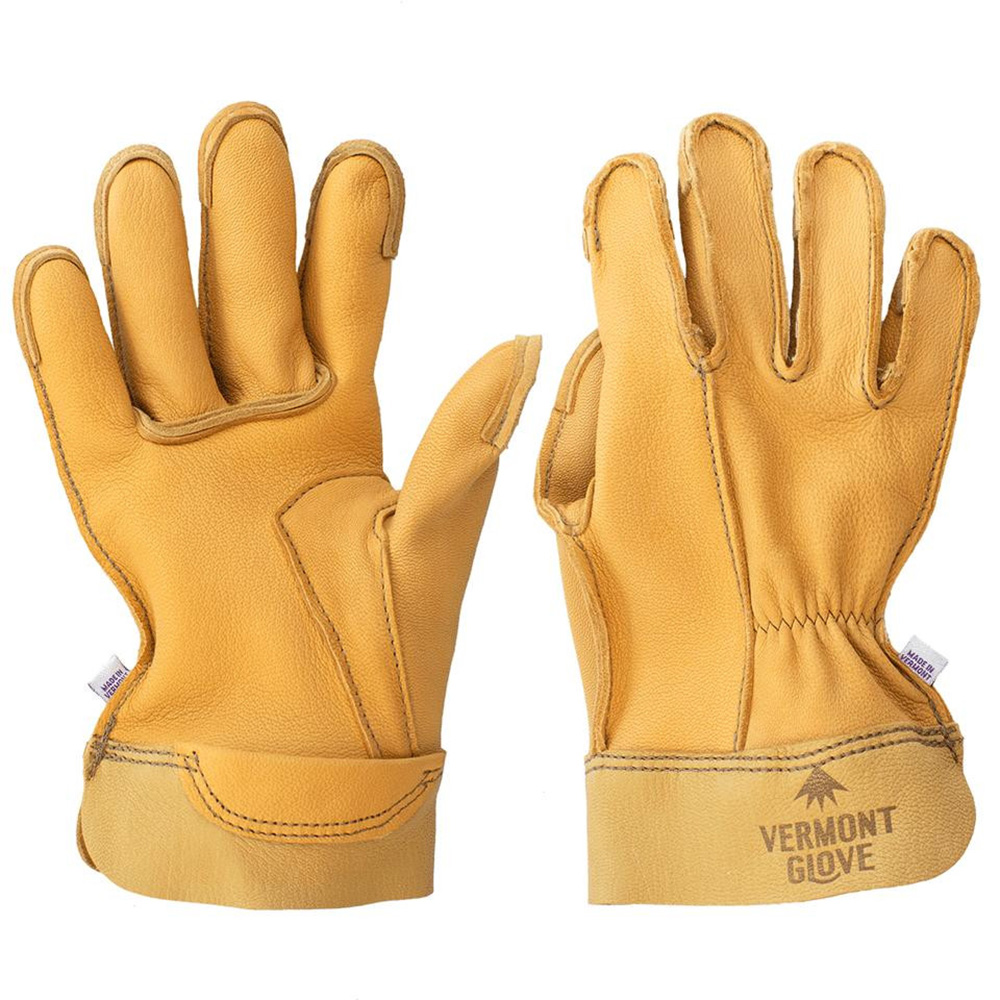
A New (or Used!) Jacket
Luke Koppa: This is obviously very broad, but I can offer more help than just telling you to get “a jacket.” For starters, we’ve detailed a whole bunch of them over the past year.
If you know someone who might need a new midlayer or big warm coat, then I highly recommend checking out our huge roundups of midlayers and insulation — here’s a link to the men’s version and the women’s counterpart (both contain pieces available in men’s and women’s variants). Those roundups feature everything from light and breathable fleeces to ultra-warm puffies, and we compare and contrast each piece to help you figure out which one might make the most sense for your giftee.
We’ve put together similar articles on outerwear — here are our most recent women’s and men’s snowsports outerwear roundups. They contain a huge variety of jackets and pants designed for skiing and snowboarding, and they’re a great place to start if you’re searching for new shells.
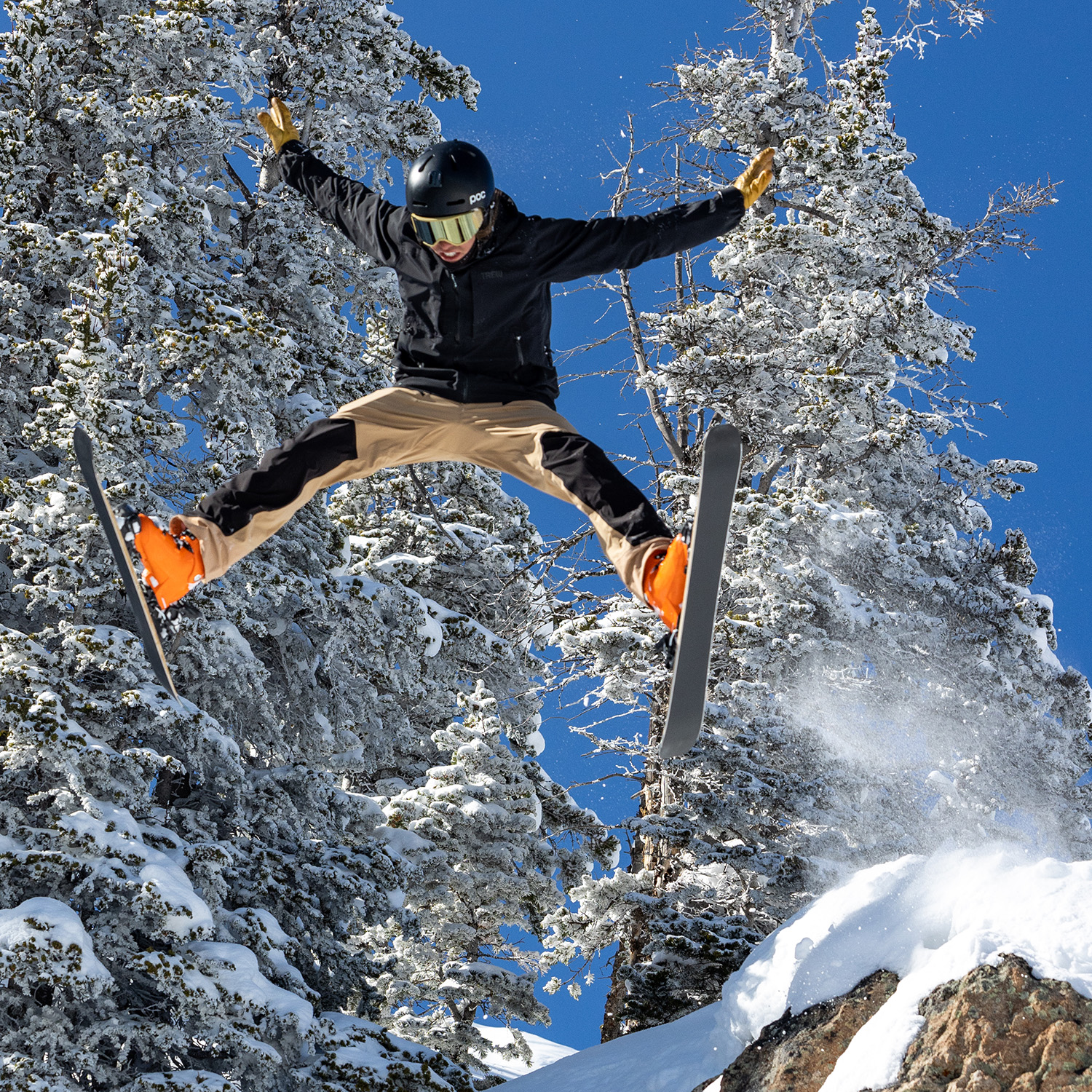
I also want to point out the value of shopping the used market. Websites like Grailed, Gear Trade, and Poshmark are often filled with barely used, high-end pieces that you can get at a bargain and keep from filling up more space in a landfill. Especially if you know someone who appreciates ‘vintage’ clothing (whether that means technical apparel or otherwise), sites like that — or your local second-hand store — can be fantastic.
Plus, one of the upsides of the recent GORPcore trend in streetwear is that you’ll now see a lot of high-end, technical apparel in second-hand stores that usually feature much more casual pieces. Some streetwear sellers might vastly overestimate the value of trendy brands like Arc’teryx (no, I’m not gonna pay over retail for a used Atom LT, Chet), but they often do the opposite for other high-quality brands that might not have the same name appeal at the moment.
Velocio Trail Access Hardshell or Anorak
MSRP: $389
David Golay: If you’re looking for a specific jacket recommendation, I continue to be a huge fan of Velocio’s Trail Access Hardshell and Anorak. I already wrote up the Trail Access Hardshell in the October 2023 edition of Stuff We Like, but I (1) continue to be a huge fan and (2) maybe even slightly prefer the Anorak version that I’ve been testing this fall.
(Velocio also makes women’s versions of both, and both the men’s and women’s versions are offered in a commendably wide range of sizes. At 6’, 165 lb / 183 cm, 74.9 kg, the men’s Medium fits me great.)
To be clear, these are pretty much full-zip and anorak versions of the same jacket. They’re cut the same and use the same extremely breathable Pertex Shield Air fabric. Both feature the same excellent cuff design, which simply uses a stretchy panel on the underside of the wrist to keep the cuff closed off without needing a velcro adjuster. It’s comfortable, easy to use, and effective.
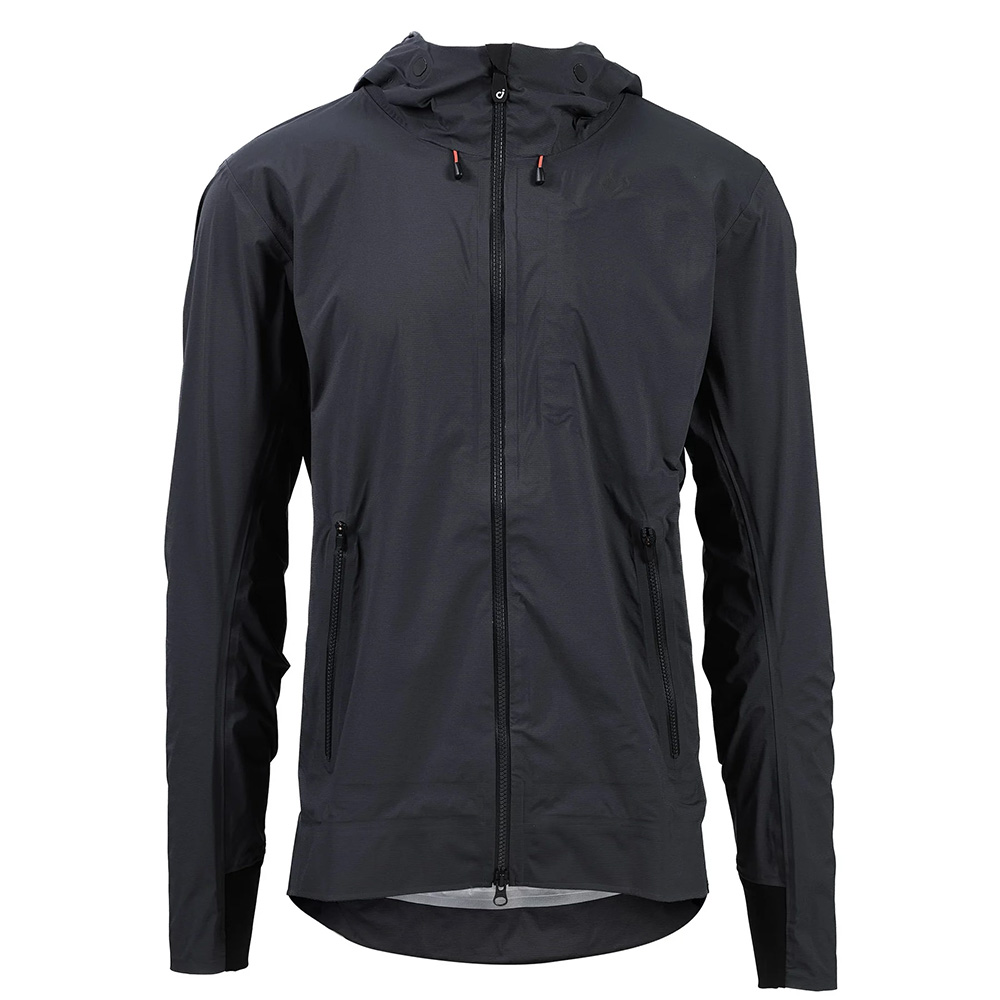
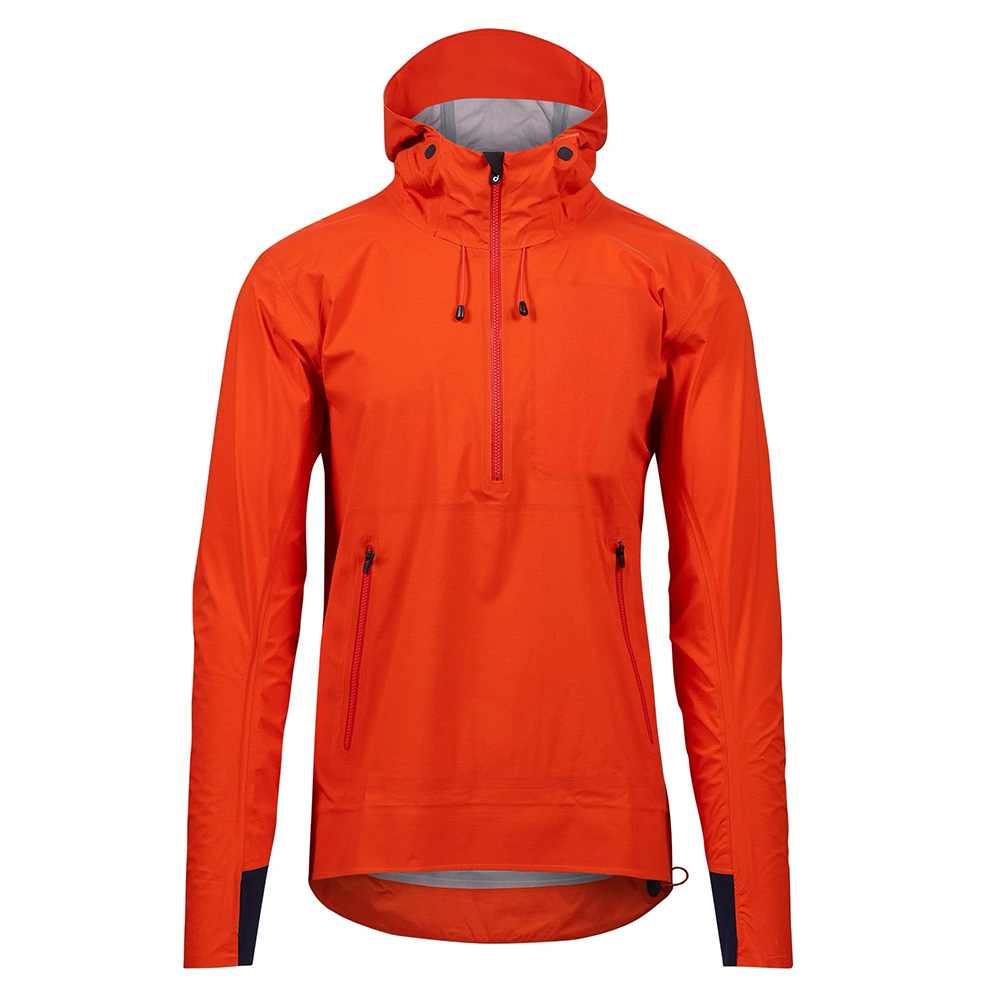
The biggest reason I like both these rain shells is that they’re the most breathable waterproof jackets I’ve tried to date. Living where I do in Western Washington, spring and fall riding involves a lot of damp — but not that cold — days on the bike; these Velocio jackets are incredibly comfortable in those sorts of conditions. They’re cut well for on-bike use while still looking good off it; they’re very light and packable; and despite their thin fabric, have held up very well for me.
I narrowly prefer the anorak version because I just find it a touch more comfortable when hunched over on the bike, given the lack of a zipper over my stomach. I also like having the pass-through hand pocket for clasping my hands to warm them up when needed. The full-zip Hardshell has the advantage of being able to be opened wider for more ventilation and is slightly easier to take on and off. Both are great, and the choice between them just comes down to exactly what combination of features you want.
Pants w/ Gnara’s GoFly Technology
MSRP (at time of publishing):
- Go There Shorts: $168
- Go There Pants: $118
- LIVSN x Gnara Ecotrek Overalls: On sale for $199 (MSRP: $229)
Kara Williard: Once again, I want to give a shoutout to Gnara’s “GoFly” Technology. To hear all about it and why it’s important, check out GEAR:30 Ep.306 w/ Gnara’s founder.
Gnara is really onto something with their GoFly Technology, and since I last wrote about it, Gnara has expanded their offerings. Some recent developments include a collaboration with LIVSN (the result being a pretty awesome pair of overalls), and their first pair of leggings with GoFly Technology will be ready just in time for the holiday season!
Gnara’s GoFly design allows people to squat and pee without having to pull down their pants entirely. Over the past couple of years, I have found this zipper incredibly useful for a variety of reasons, but the top two include not having to find a place that is 100% private to go pee, which is especially helpful in the tree-less desert or other places with a lack of coverage.
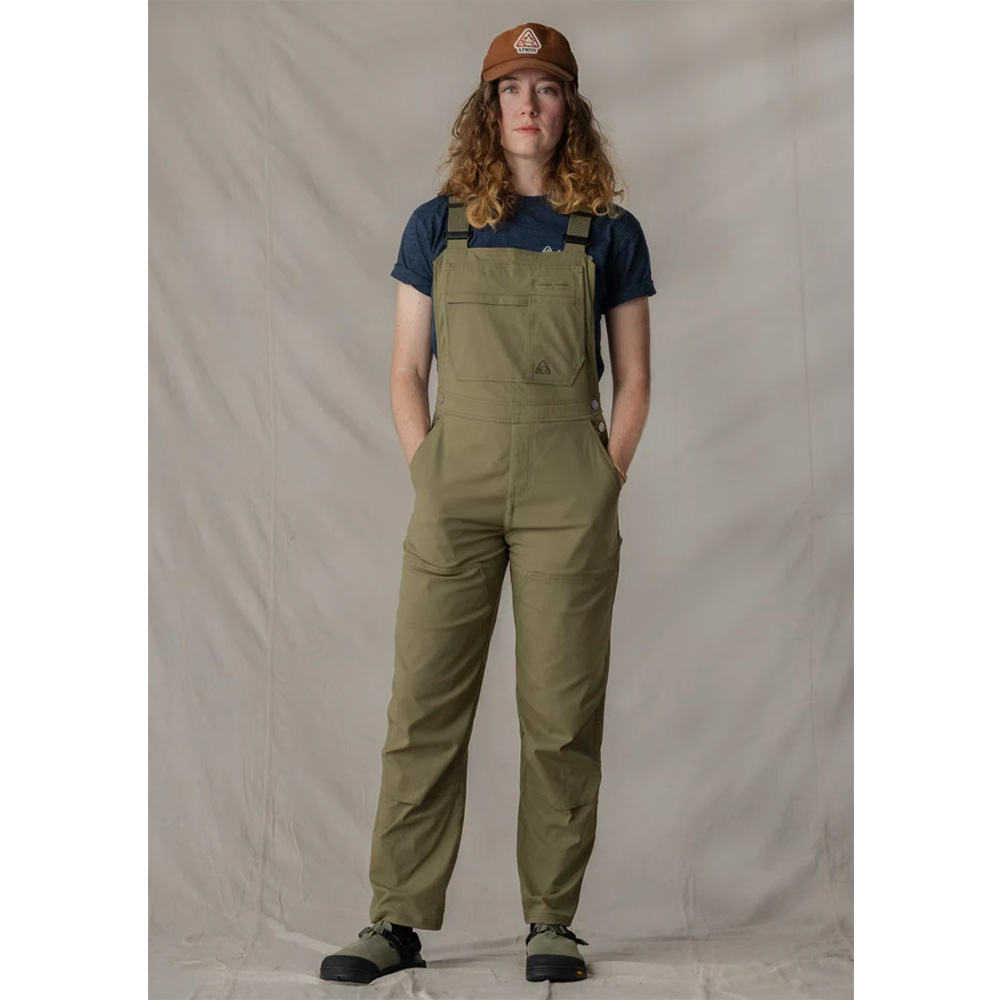
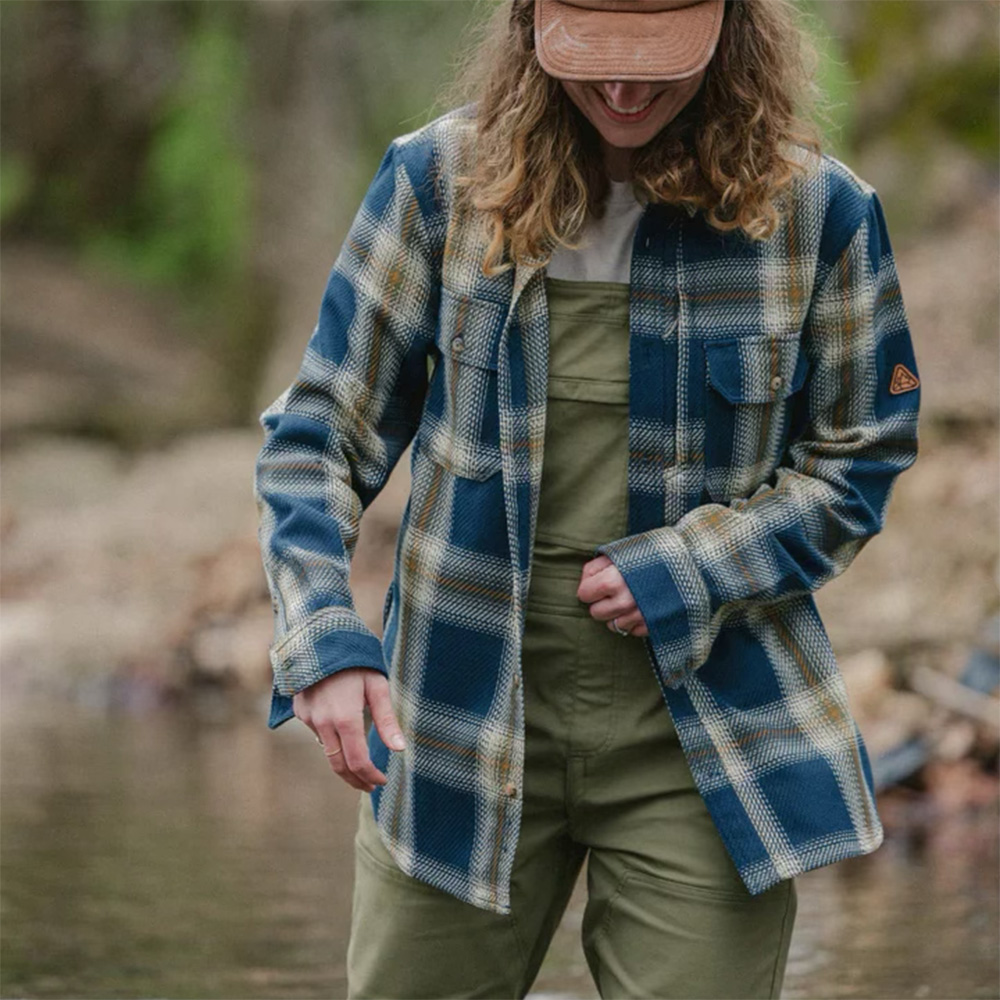
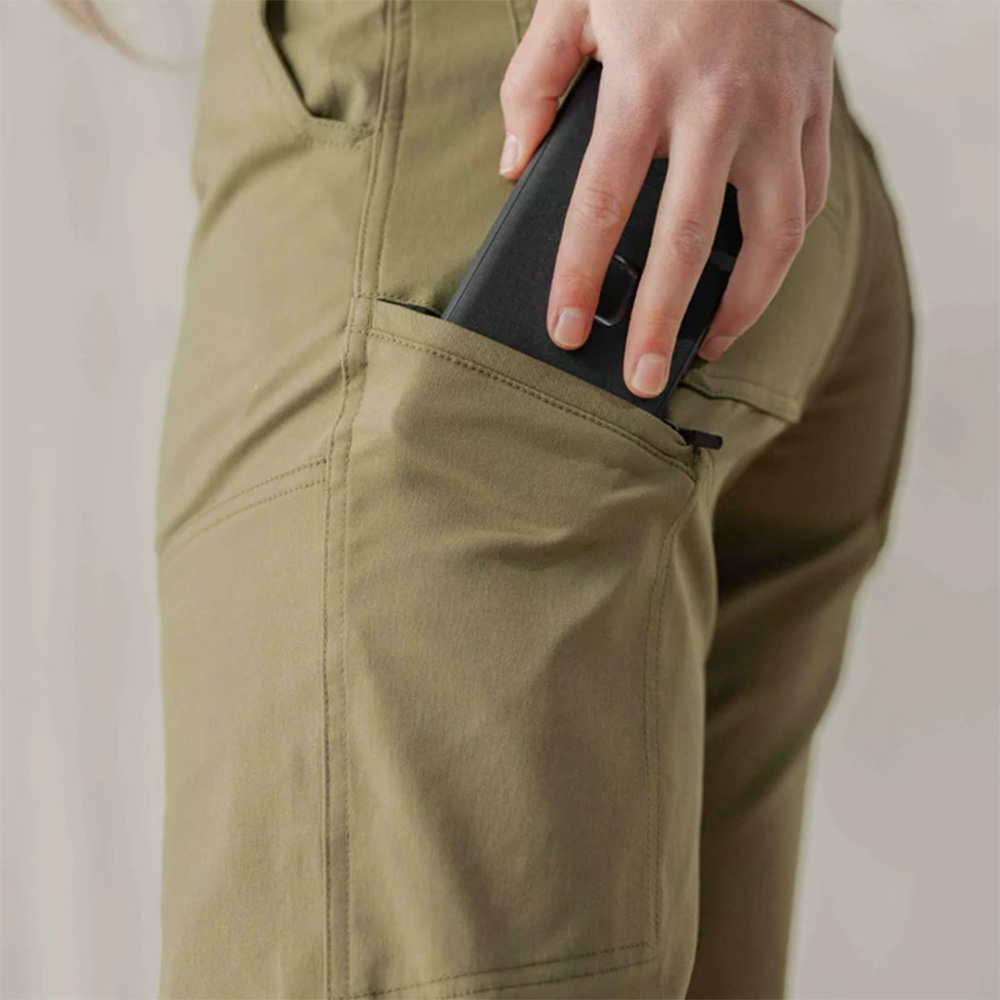
The second most impressive and practical time for using this zipper is when I am in a climbing harness; I don’t have to take my harness off completely in order to use the bathroom. I spend tons of time outside and have often found myself panicking while looking for complete privacy; Gnara’s GoFly Technology has alleviated this problem. The zipper design is well executed and 100% functional, and I have zero qualms to date.
I wrote last year about how much I liked Gnara’s Go There Shorts and Go There Pants. That still holds true, but in the past few months, I’ve been stoked on Gnara and LIVSN’s Ecotrek Overalls. I am a huge fan of overalls in general, especially for miscellaneous farm tasks and long days outside. However, my biggest qualm with overalls has always been how obnoxious it can be to take them off when you need to pee. The integration of Gnara’s GoFly technology easily solves that, but that’s not the only reason they became my favorite pair of active overalls. Other reasons include the incredibly ample pocket space, durable, stretchy, but still comfortable fabric, and the generally flattering fit (the last point being rare in the overalls I’ve tried). The Ecotrek Overall is comfortable and flattering enough to wear casually, but it’s also proven rugged enough to use on the farm, while camping, or other outdoor activities.
I highly recommend checking out Gnara’s pant and short options if you have someone in your life who spends a lot of time outdoors and would appreciate clothes that take the difficulty or discomfort out of backcountry pee breaks.
Danner Logger Moc 917 GTX
MSRP: $240
Jonathan Ellsworth: I got these boots just over a year ago, and over that time, I’ve come to love them more and more. Why?
When you live in a snowy place where the streets and sidewalks can get quite icy, you’ll likely end up having quite a collection of boots and footwear. I’ve got super tall, waterproof boots for postholing and deep-snow shoveling, lower boots that are still waterproof but walk much better and have great traction, etc. But often, those boots can be overkill, and that’s where the Danner Logger Moc 917 GTX fits right in: they’re still waterproof, but they walk really well and feel far more like a hightop sneaker than more overbuilt winter boots. And their Vibram soles handle steeper, icy sidewalks better than most of the more casual-style boots that I have experience with.
Also, some “waterproof” boots can get really hot, since the priority with them isn’t breathability, it’s water resistance. This is a subjective point, but I regularly — and comfortably — wear these boots on 3-5 hour drives (like I did this morning), and these are also becoming my staple footwear for winter travels via planes and airports.
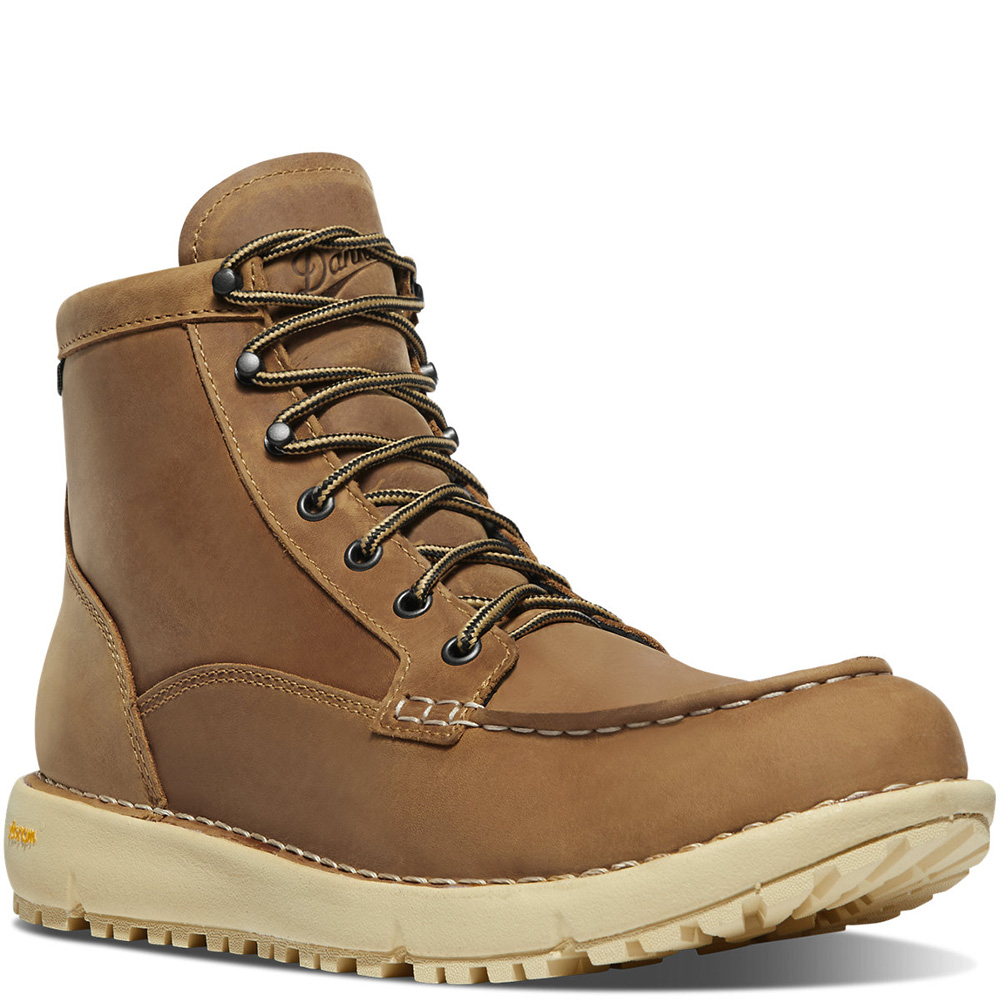
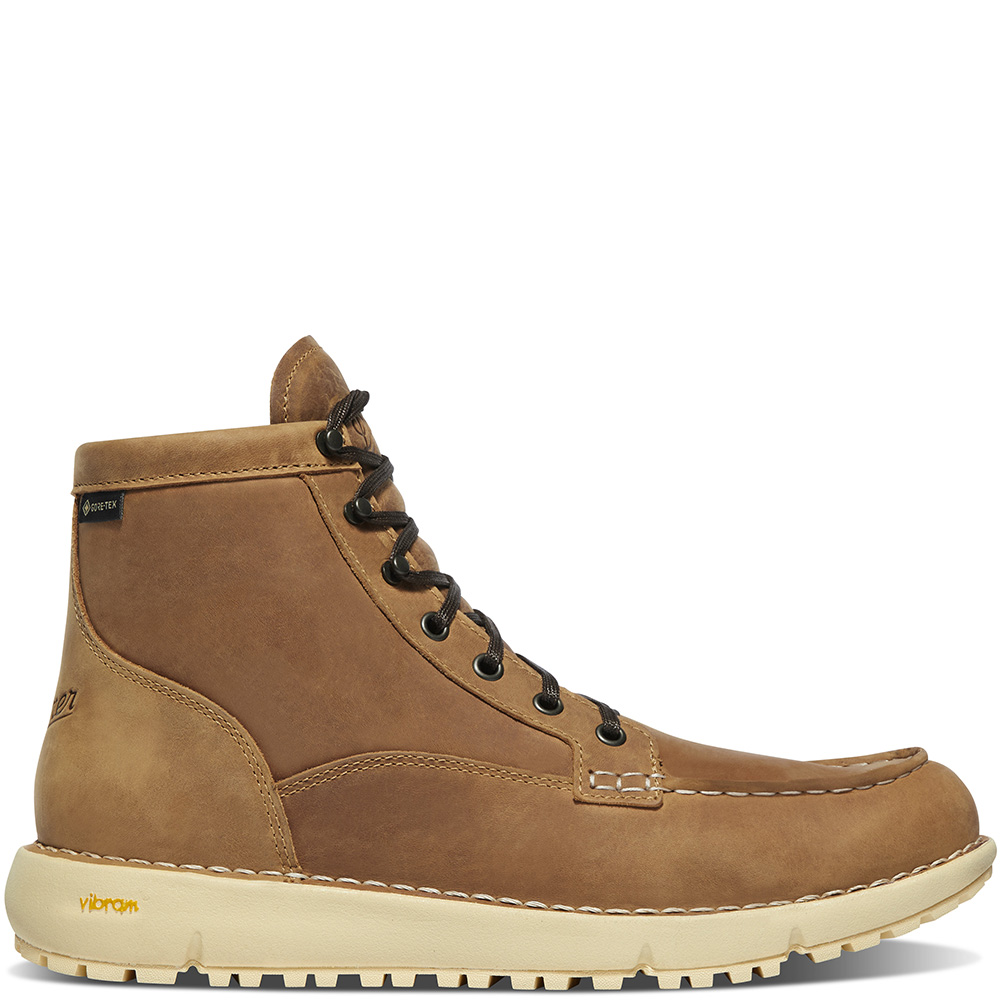
As for sizing: I’m a US Men’s size 10.5 in street shoes, and that’s the size I have in the Logger Moc 917. So if there’s a guy in your life who could use a functional winter boot that still brings a good bit of style to the table (you know, for those winter dinners out, etc.), then give these a shot.
Luke Koppa: I’ve used several Danner boots over the years, and while I haven’t tried the Logger Moc 917, I feel the need to also shout out their classic Mountain Light. My pair has lived through 4 or 5 years in Crested Butte at this point (I can’t remember when I originally bought them), and they’re still holding up really well.
Danner makes several other boots that are lighter (such as the EVA-midsoled 917 series), but the timeless style and durability of the Mountain Light have made them a staple for me. I plan to get them resoled this year since the heel rubber is finally wearing close to the midsole, but that repairability is another aspect that’s made them such a worthwhile investment for me.
Gregory Alpaca Gear Basket & Wide-Mouth Case
MSRP: $79.95 & $99.95
Kristin Sinnott: Can anyone ever have enough bags? The answer is definitely yes, but I think Gregory’s Alpaca line makes for great upgrades to old shopping bags, duffles, and totes.
For years, my partner and I would throw snacks in a cheap grocery bag, throw them in the car, and head on a road trip. I hated rummaging through that bag to locate a snack for my son. The bag would always fold in on itself and it would be impossible to find anything without emptying everything. I often found myself volunteering to drive just so I didn’t have to be in charge of locating snacks and other little things on the road.
Now, whether we’re taking a quick drive to soccer practice or a long road trip, I pack the Alpaca Gear Basket 70 and the Alpaca Wide-Mouth Case 25. The Gear Basket is similar to another storage solution I’ve really liked over the years, the Rux, but the Gregory version’s corners don’t collapse as easily. The Gear Basket has a rigid frame with built-in handles for easy grab and go. And the fiberglass corners lock into place with sturdy velcro. We’ve used the Gear Basket for camping, grocery runs, bike gear, and so much more.
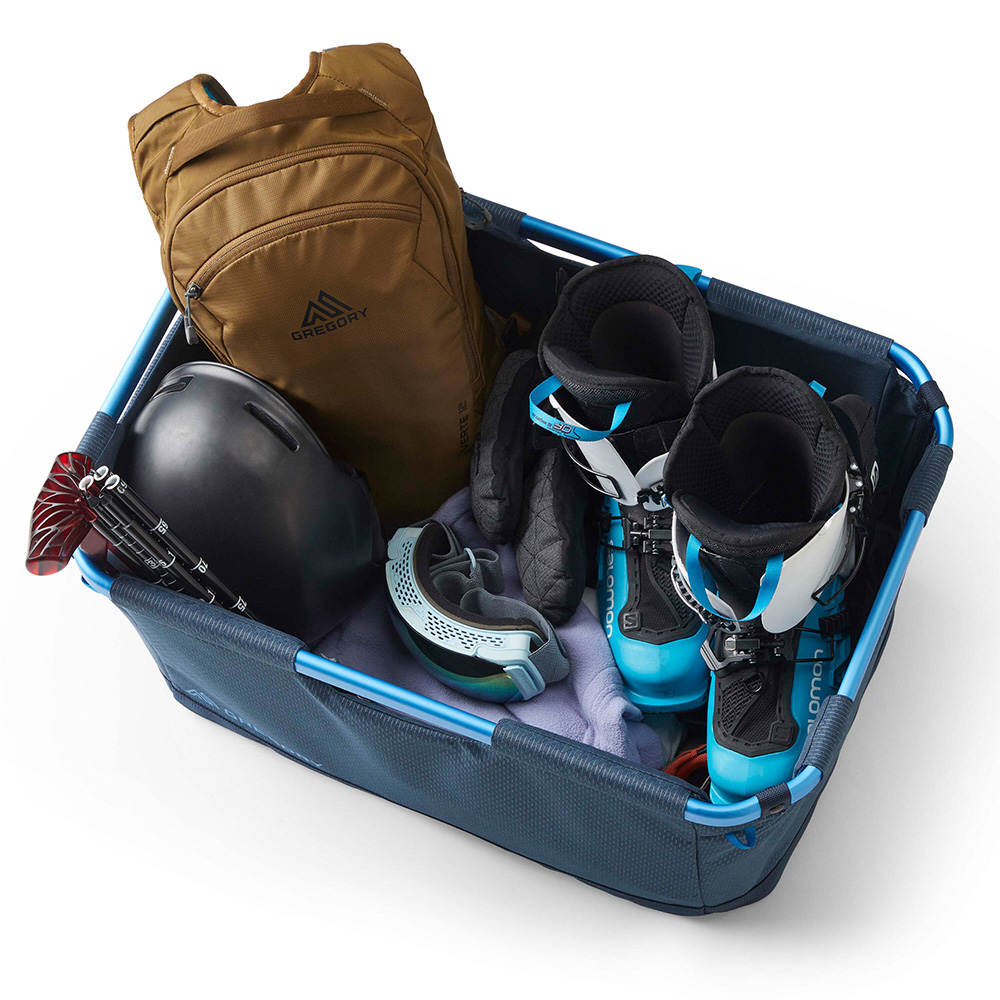
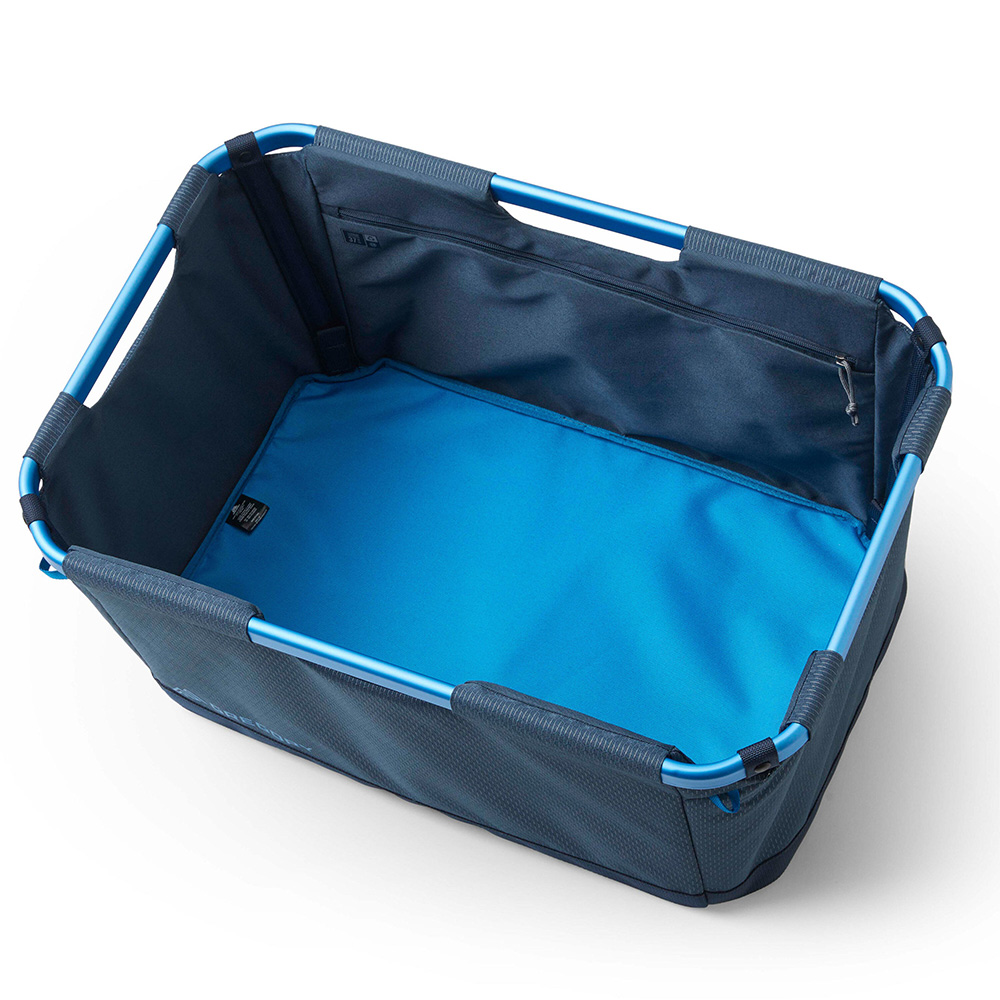
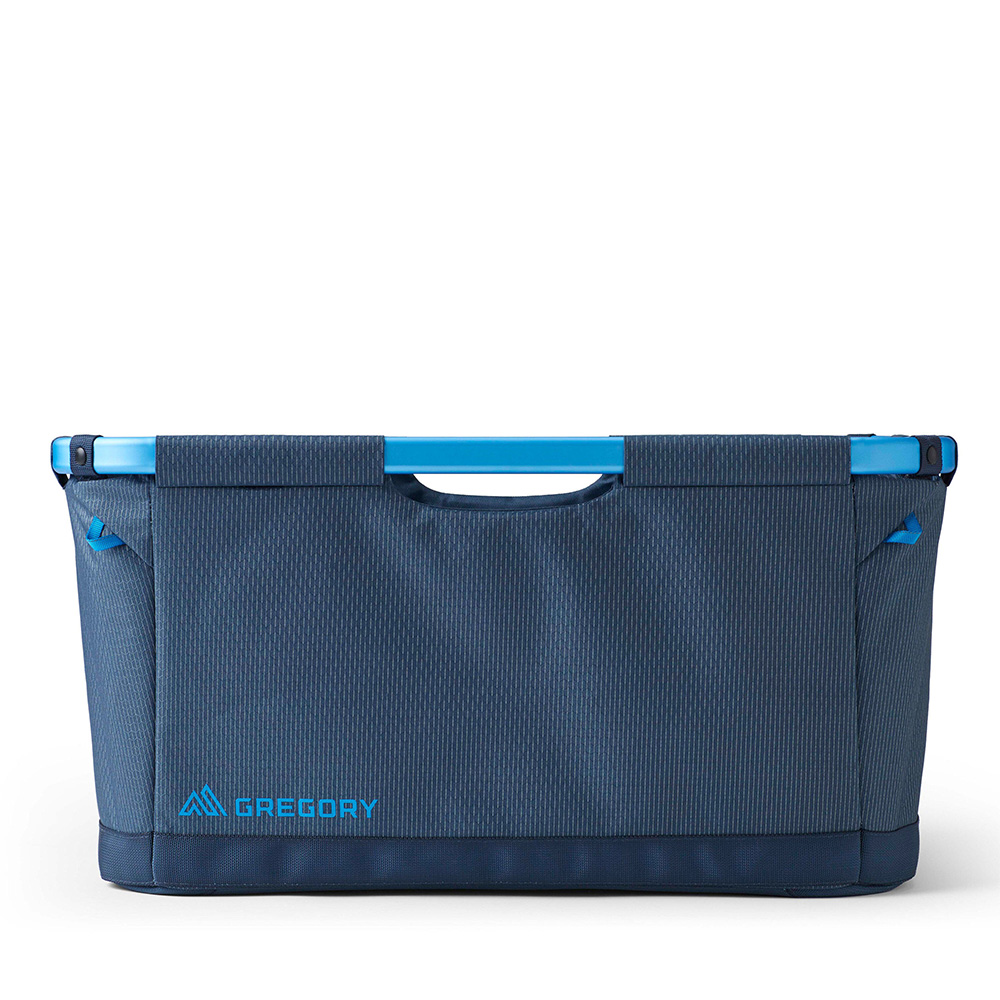
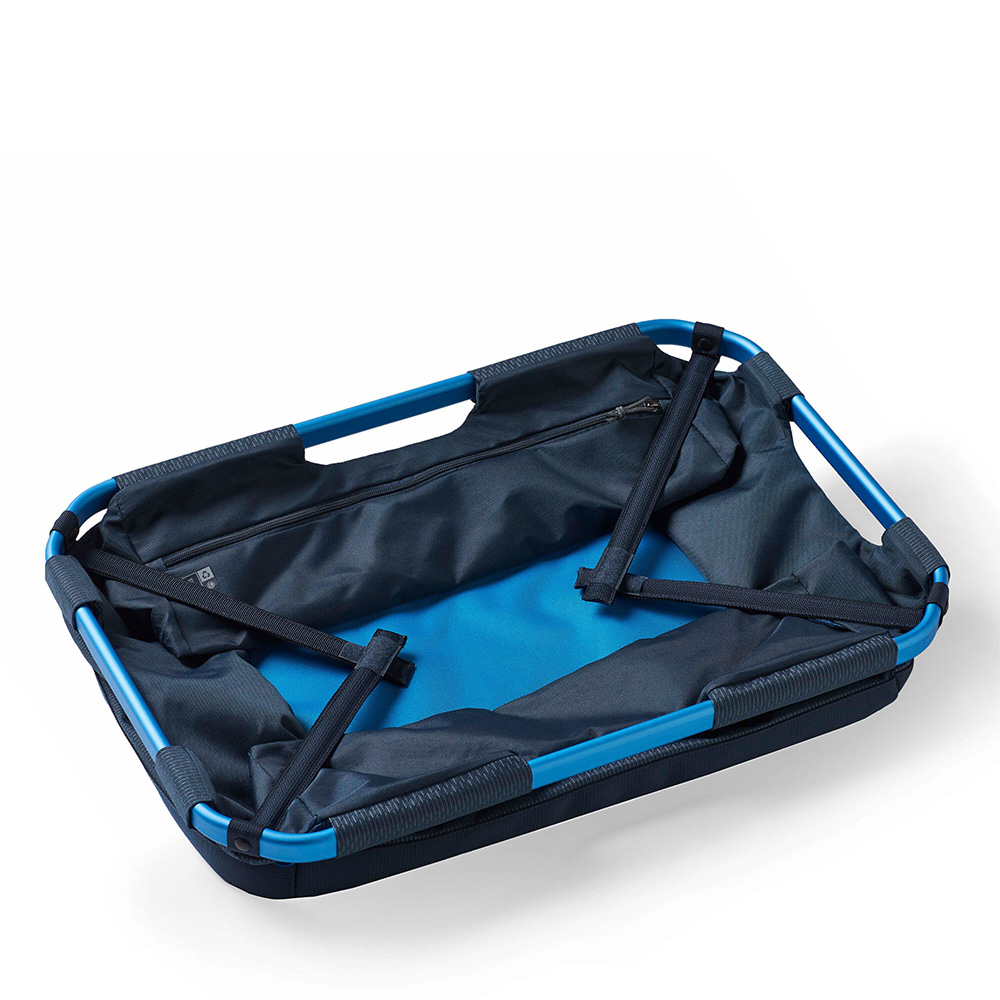
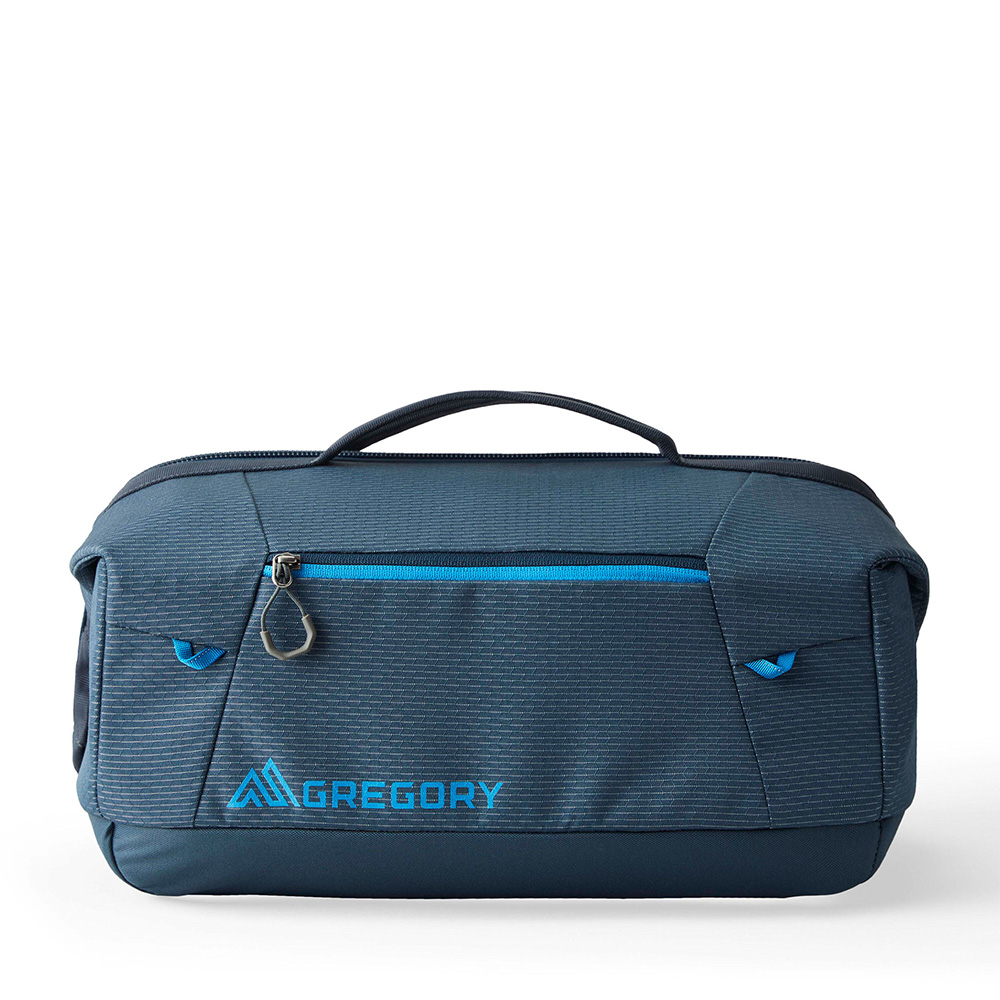
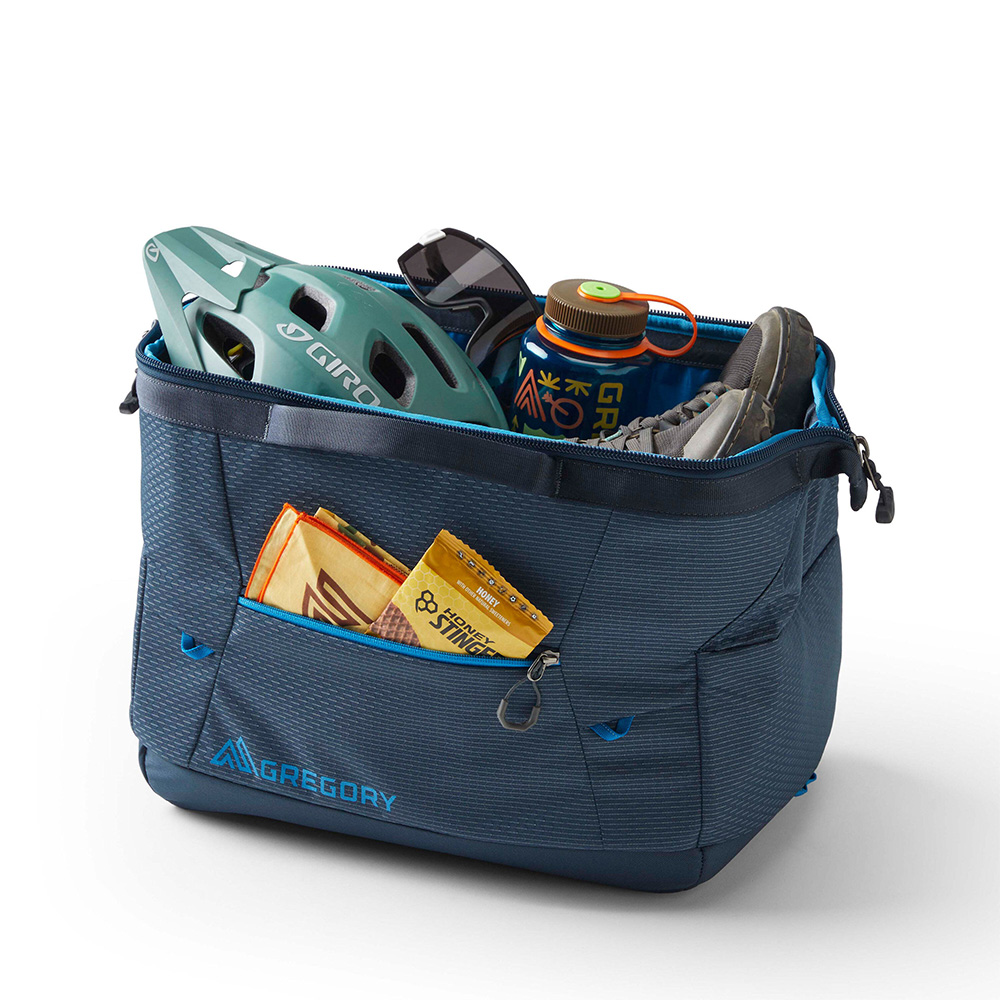
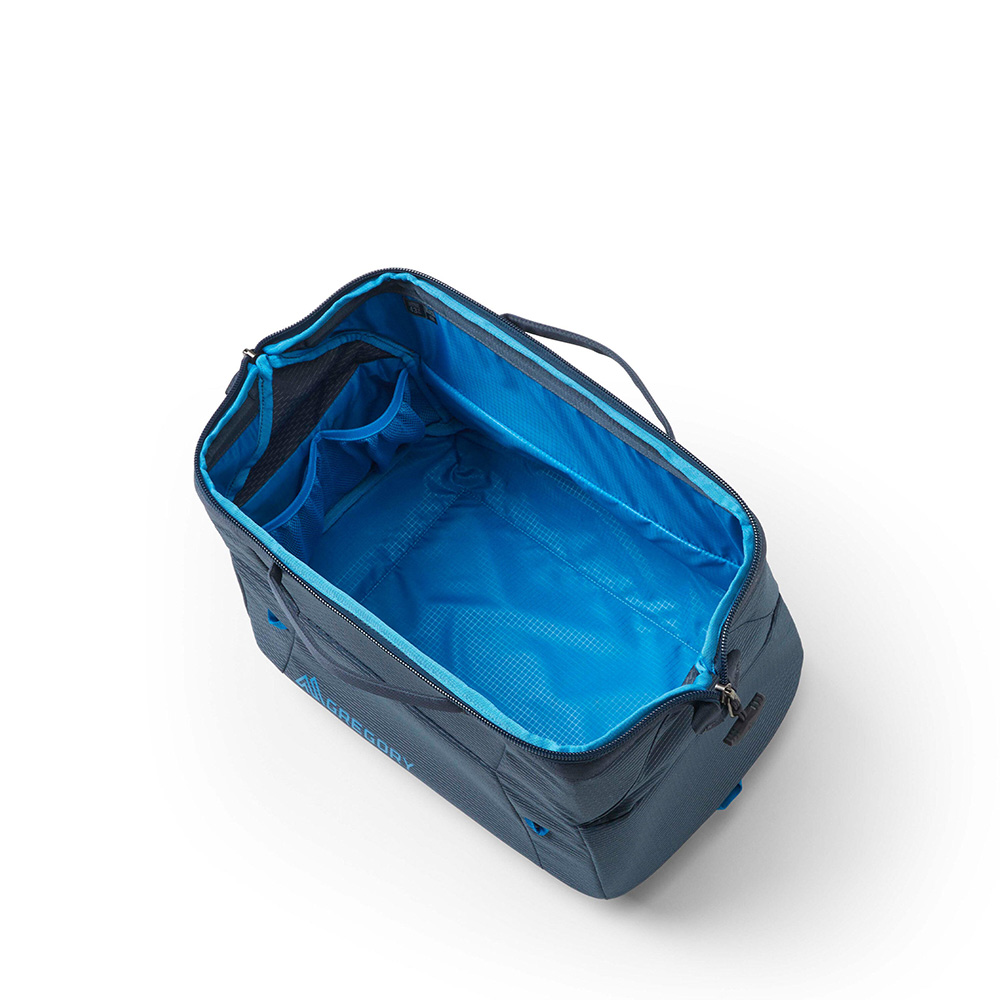
The Wide-Mouth Case is a soft-side bag with a frame. When you unzip the bag, it stays open, allowing for easier access. The bag is padded and has a nice structure to it, and there are internal pockets for storing small items like keys, sunglasses, etc. I seem to find a use for the Wide-Mouth Case every day; it’s my go-to snack bag for my son (why do kids need so many snacks all the time?!). But there’s also enough room to include his sports gear. When the Wide-Mouth Case is unzipped, I can put it on the seat next to him, and he can easily find what he needs.
Both bags come in 2 different sizes, and I can’t think of anyone on my holiday list who wouldn’t find a use for either of these bags.
Outbound Lighting Downhill Evo Package
MSRP: $375 USD
Zack Henderson: Living in the upper latitudes of the US means that days get awfully short in the winter. I still start my rides in daylight at this time of the year, but they often end after dark. Consequently, lights are a necessary part of my riding kit
Many lights come from overseas, but Outbound Lighting is making top-quality lights using robotics-assisted automation right here in the US of A. Based in Chicago, Outbound only makes four light models — two helmet lights, one mountain bike handlebar light, and one road-oriented handlebar light. The original models, and the ones included in the Downhill Evo Package, are the Trail Evo handlebar light and Hangover helmet light.
The Trail Evo is an imposing unit, cranking out approximately 2200 lumens via a very broad beam pattern. I believe that beam pattern often matters more than absolute brightness (i.e., lumens), and the Trail Evo provides plenty of brightness while spreading that light evenly across the whole trail. It’s truly impressive how much coverage it provides.
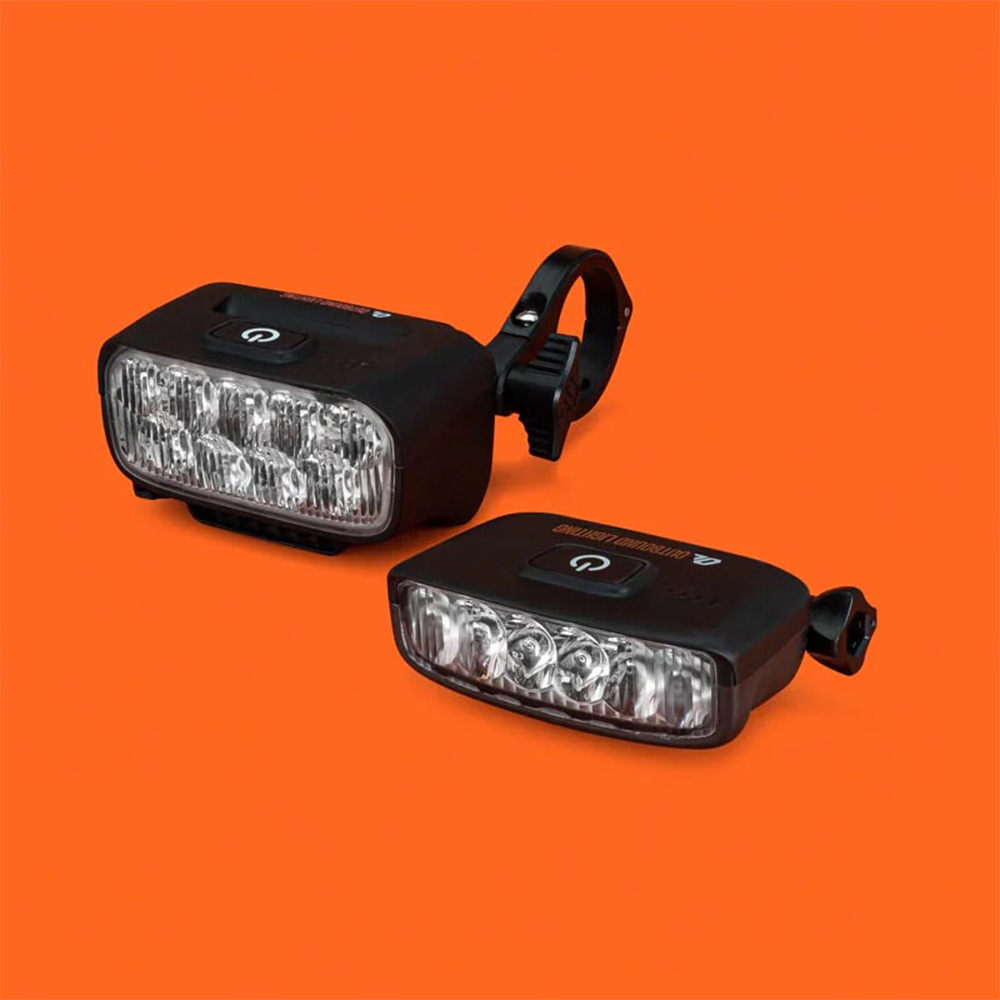
Its battery life is also pretty good; while I often climb with the light on Low brightness and descend in High mode, I’ve never had it die on me — even on longer rides in full darkness. Outbound claims runtimes of 1.7 hours on High, 8.5 hours on Low, or 2.6 hours in their nifty Adaptive mode, which slowly rolls back brightness over the course of the ride as your eyes adjust to the darkness. Outbound also conceived their own quick-release handlebar mount for the Trail Evo, and it’s remarkably secure while being easy to use.
The Hangover helmet light shares the same brightness modes, but it casts a more focused beam intended to supplement the Trail Evo’s broad light pattern. Battery life is a touch shorter on the Hangover (1.6 hours in Adaptive mode), but it’s still practical for most rides, and I often ride with my helmet light off on longer climbs anyways. The Hangover’s mount is rather unobtrusive and attaches to your helmet using a GoPro mount (or one of Outbound’s mount plates).
The Downhill Evo Package is not the cheapest light setup, but it’s very reasonably priced for the quality and performance on offer. I grew up night riding with my dad after he got home from work, so I’ve seen bike lights evolve over decades now, and the Trail Evo and Hangover are the best I’ve used.
Dylan Wood: I just want to chime in here to agree with Zack that the Downhill Evo package is an excellent gift for riders who could use a little extra light on their rides. I’ve been using mine all summer, and it’s incredibly impressive how much light these units create — I’ve ridden some of the hardest trails in my area in the dark, thanks to the Trail Evo and Hangover.
Ornot UV Trail Shirt
MSRP: $78 USD
Zack Henderson: Ornot makes its clothes in California out of recycled and deadstock fabrics, but outside of being a US-made and more sustainable option, their UV Trail Shirt has quickly become my favorite long-sleeve jersey. The fabric is a thin but exceptionally soft polyester mesh with 15% Lycra for added stretch. Breathability and moisture management are exceptionally good, rivaling some of my favorite wool tops (though the UV Trail Shirt doesn’t stay as warm once wet).
The cut is also spot-on in a size Medium for my 6’0 height and 165 lb frame — it’s fairly slim and simple, but includes details like a dropped rear hem for proper coverage while in a riding position. I tend to prefer clothing that’s more form-fitting rather than overly loose and baggy, and Ornot nails the fit for my preferences.
$78 for a US-made jersey of this quality is pretty good value in my book, and I’d sure be stoked to see one (or two) more of these under my tree this year.
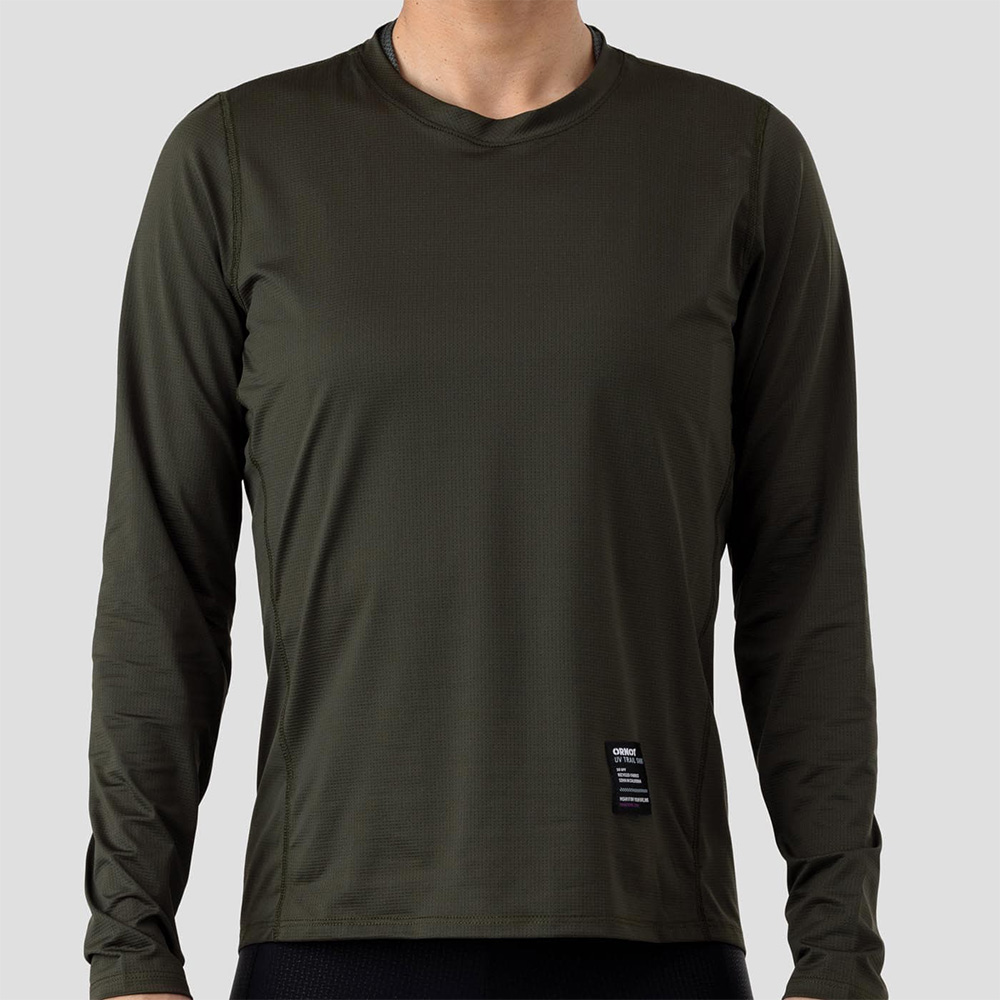
Paka Original Crew
MSRP: $139
Jed Doane: This sweater is the current leader in my long search for the softest clothing item out there. Paka is a newer apparel company (and a B-corp) that focuses on Alpaca-wool-based clothing and sustainable, ethical production.
Their Original Crew sweater has quickly become a favorite of mine for hanging around the house and lower-output activities. I’ve worn a number of merino wool sweaters, and found the softness of the Original Crew’s 65% Alpaca / 35% Nylon fabric to be far superior to merino. it has a relatively loose weave and is breathable enough for many activities.
I haven’t had to wash mine yet (Paka recommends hand washing), but it’s so far proved relatively resistant to odor buildup from sweat and campfire smoke. It’s also very compressible and easy to pack. The fit is relaxed, stretchy, and runs a bit large; I’m 6’2” / 188 cm and am comfortable in the Medium. It’s also available at a pretty impressive price point compared to other wool sweaters. If you’re looking to spoil a loved one during the colder months, check out the Paka Original Crew.
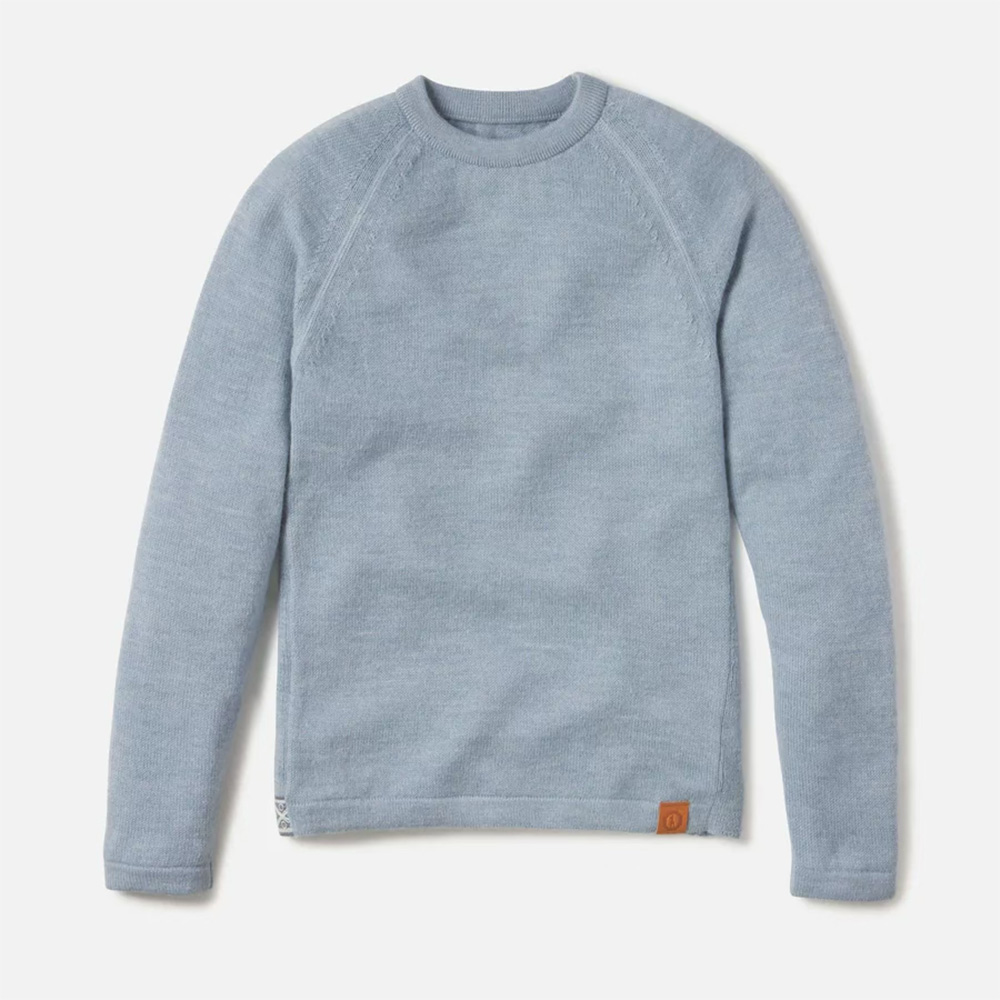
Yeti Camino Carryall 50 Tote Bag
MSRP: $200
Jed Doane: Schlepping large amounts of gear from the house, as I do routinely, is annoying (and, yes, very much a ‘first world problem’). But if you’ve ever tried to use an IKEA bag to carry heavy skiing / fishing / hiking gear, you understand the frustration that can entail. We’ve written about several other gear totes from Rux and Patagonia over the years, and Yeti’s largest Carryall tote bag is a high-end, well-designed option to add to the list.
It’s a heavy-duty affair, featuring a rugged nylon/TPU construction with welded seams and a molded base that allows it to keep its shape and stand up while empty. Not shockingly, it’s also heavier than most similar bags, weighing in at almost 5 pounds (2.3 kg) empty. However, its improved structure relative to most other large-volume tote bags makes the weight worth it for me.
For a tote bag, the Carryall 50 also has a solid set of features. Two zipper pockets by the handles on each side are useful for keys and phones.
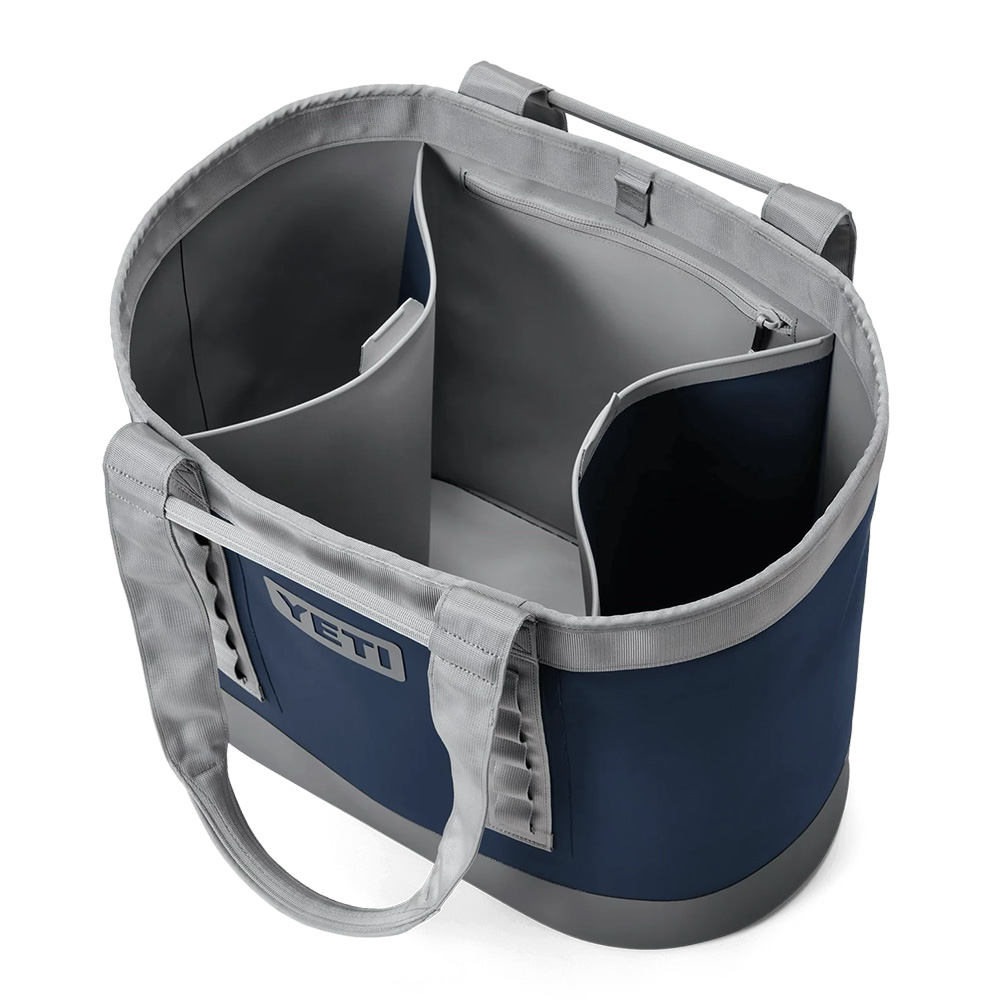
Its two full-height internal dividers use the natural curvature of the bag to stow automatically unless needed, in which case they hold ~15L each. I especially love the handles on the Carryall 50. For lighter loads or carrying the bag like a briefcase, the stiff, reinforced handles maintain the bag’s structure so it doesn’t fold in on itself and is easy to carry. The oversized straps also provide a comfortable shoulder-carry option that, in my experience, is quite ergonomically designed. The outside of the bag has daisy chains on both sides that can be used for specifically-designed Yeti accessories or, in my case, be used to house a carabiner for clipping shoes and boots to the outside of the bag.
If your loved one hates taking two trips, consider a splurge gift with the Yeti Camino Carryall 50.
EVOC Hydro Pro 6
MSRP: $150
David Golay: Unless I’m carrying camera gear, I rarely wear a full backpack on the bike. They just tend to be too hot, too clunky / unstable on the way back down, and are usually just bigger than I really want or need. But I’ve been using the EVOC Hydro Pro 6L a bunch this summer and fall, and I like it a lot.
The Hydro Pro 6 is essentially a running-vest-style pack that’s a little more tailored for MTB use than most, with internal organization that works well for carrying tools, a pump, and so on. It’s quite comfortable, impressively stable even when pretty full, and makes it easier for me to carry more food and water on bigger rides than I often do — which is something that I’m trying to be better about.
So if you’ve got a loved one who, like me, likes to pack light on the bike, occasionally to their detriment on the nutrition / hydration front, the Hydro Pro 6 could well be the tool they need to take better care of themselves. It’s working really well for me.
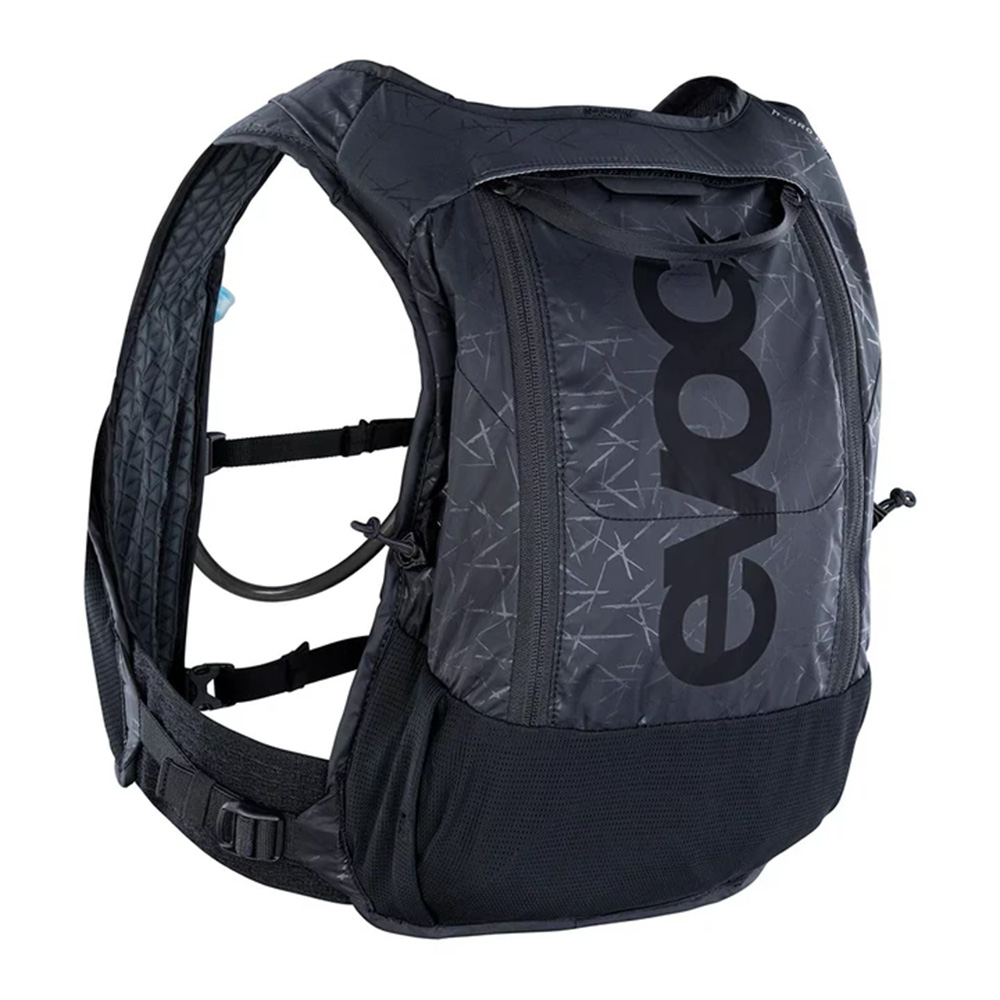
Kuhl The Flight Suit
MSRP: $175
Kristin Sinnott: Onesies have been getting more and more popular lately. From super cheap pajama onesies to higher-end baselayer versions, it seems like more and more options keep popping up. Up until recently, I wasn’t interested in them. This mostly stems from the fact that onesies generally don’t fit me well. I will admit that I do own a penguin onesie, and I have worn it a number of times for family costume days. But I wouldn’t say the fit is good, and I don’t wear it regularly.
Kuhl’s version of the onesie, The Flight Suit, has converted me. Despite my reservations about having to unzip a top to use the restroom, I still live in it whenever I’m home. The double-knit fabric has a soft and smooth exterior and a slightly fuzzy interior, the latter of which adds to the cozy factor. The fabric keeps me warm in my very drafty house, but it isn’t so heavy that I frequently find myself overheating. With six pockets (including hand pockets), there’s plenty of storage space, though I don’t find myself using the pockets much when lounging at home.
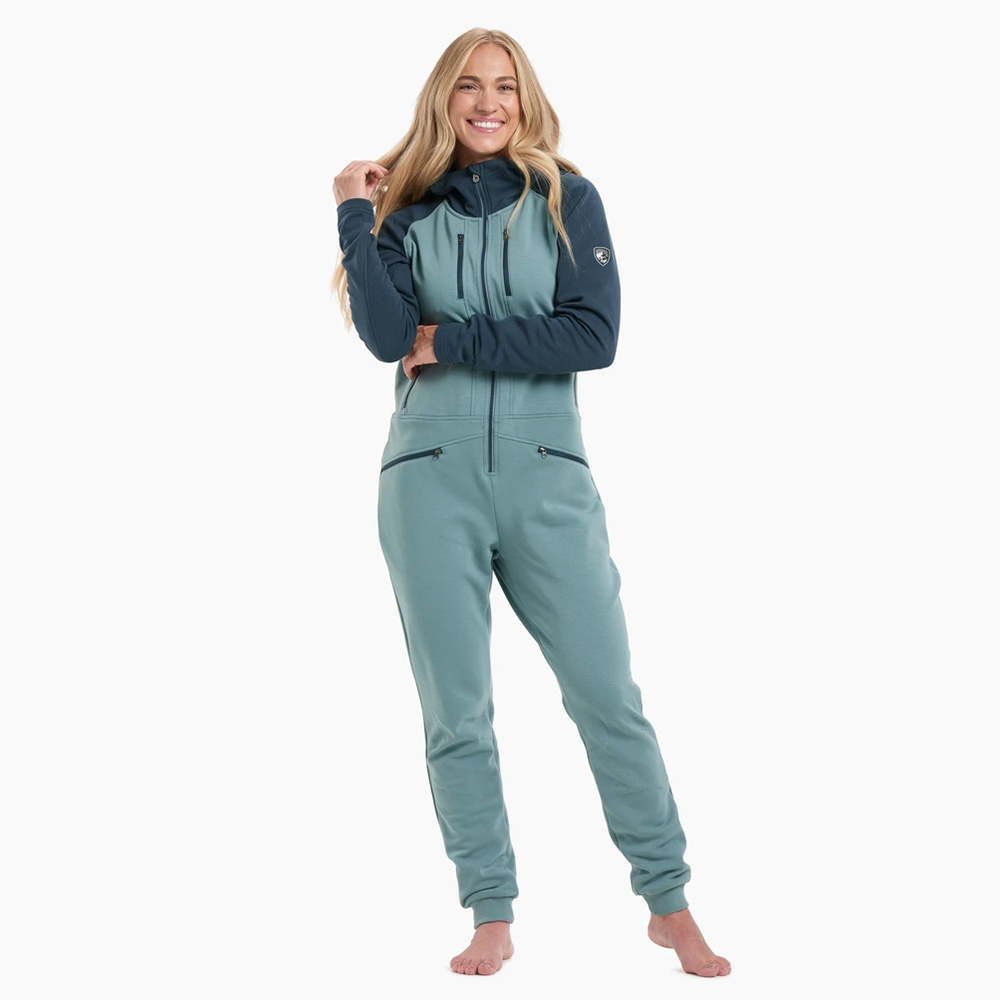
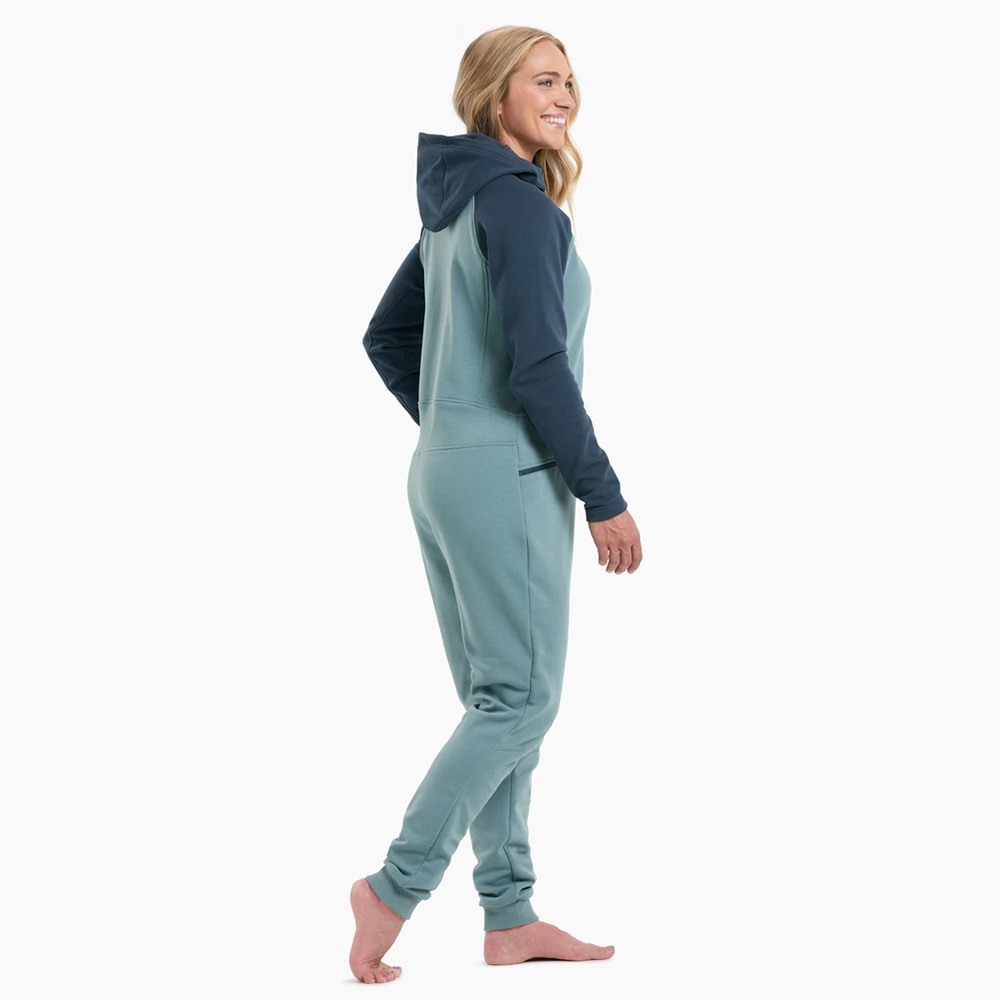
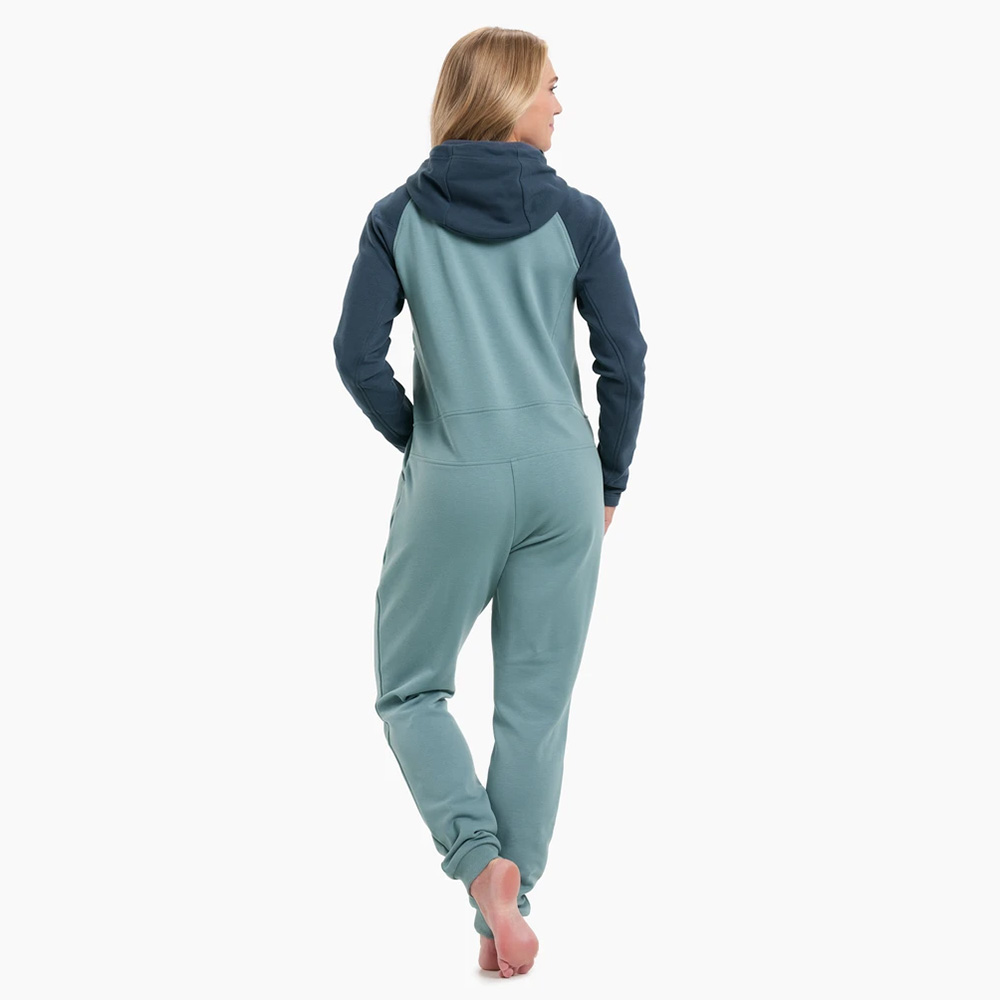
What I love most about the Flight Suit is the fit. Kuhl offers the Flight Suit in short and regular length options. I accidentally tried on the “Medium Short” size (28 in / 71 cm inseam) first and hated the fit. It wasn’t just short; it looked too small everywhere, and it wasn’t comfortable. When I tried on the “Medium Regular” (30 in / 76.2 cm inseam), the fit was perfect. It’s a bit baggy but so comfortable. I have washed and dried the Flight Suit and had no issues with shrinkage.
The Flight Suit is my go-to work-from-home home outfit, especially now that winter is starting to set in. If you or someone on your list could use a cozy outfit, I recommend checking out the Flight Suit.
Rekkie Smart Snow Goggles
MSRP: $295
Noah Eckhouse: I met the Rekkie founder at last year’s Blister Summit and skied with their goggles for the rest of the season. (Note: you can read my longer review here.) If you and your friends / family like skiing trees, chutes, or other challenging terrain where you can lose sight of each other, these goggles are a perfect gift IF you and your buddies all have them.
Why? Think of that feeling, in the pit of your stomach, when you pop out of a wonderful tree run only to have no clue where your friends are. Did they beat you down and are waiting at the bottom? Or are they headfirst in a tree well, needing your assistance immediately and not 30 minutes later when you take another panicked lap, looking for them?
Reklkie goggles have a direct, two-way data radio that shows you where your partners are, both in direction and distance. It doesn’t rely on cell signal. The information is shown on a heads-up display inside the goggles. It’s easy to use, easy to understand, and a great idea — particularly for ski ares (like Crested Butte) where cell coverage is nonexistent in places. Rekkie picked up funding in 2024 from Mark Cuban on Shark Tank and will continue to innovate. Think of this as a safety-oriented holiday gift!
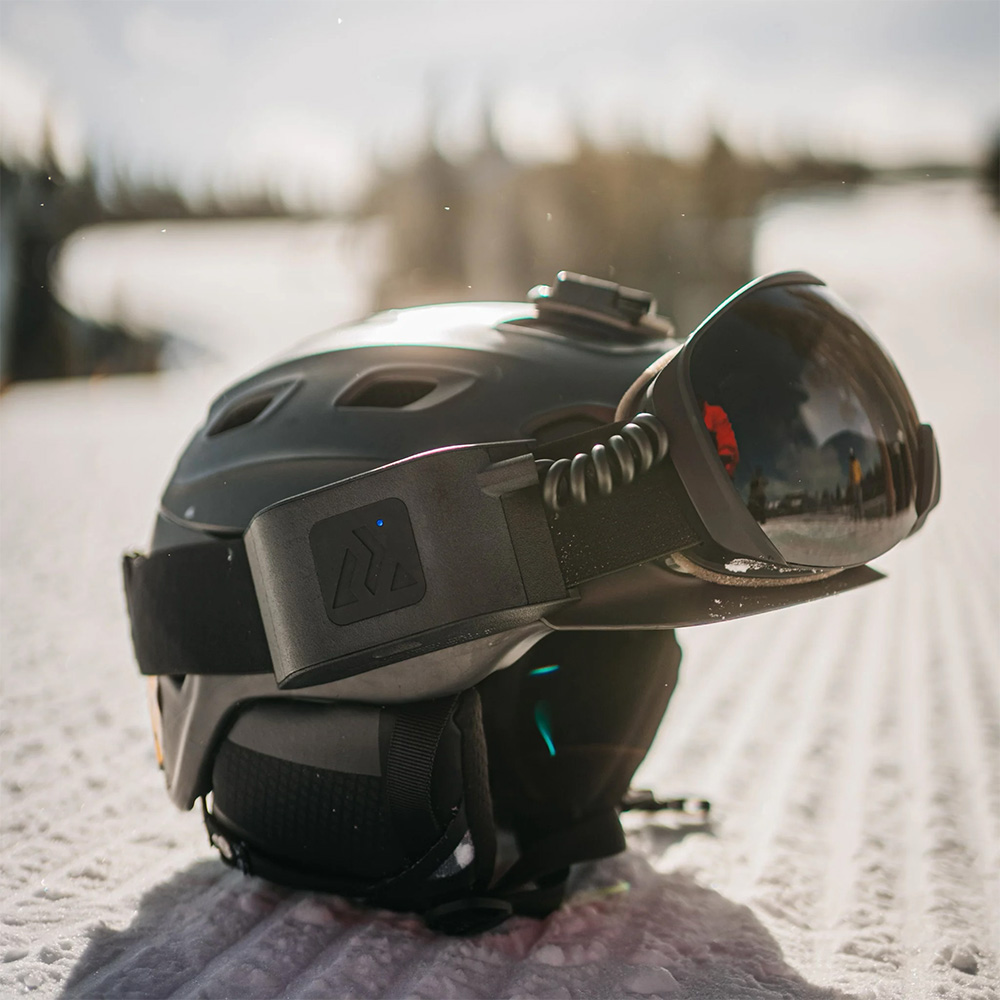
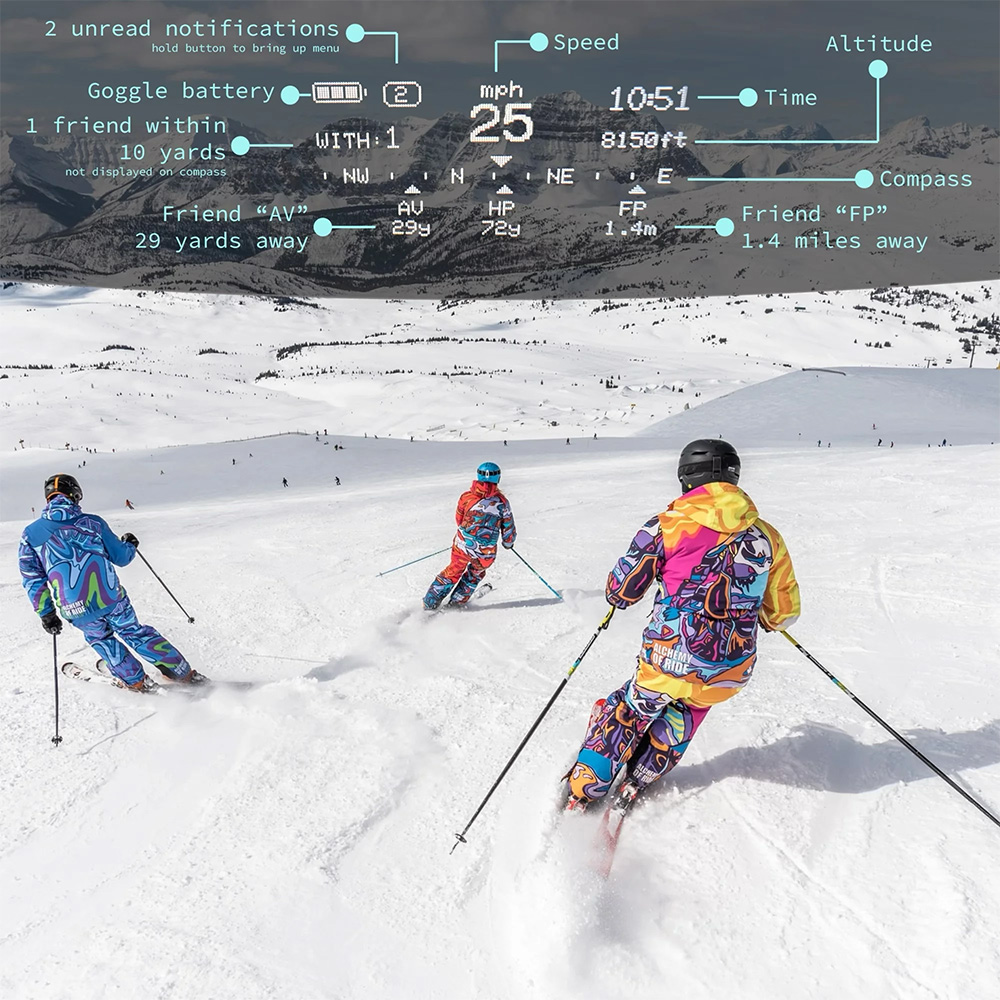
Handmade Colorado Whiskey
Noah Eckhouse: Small-batch whiskey is a wonderful gift option. With limited distribution and often no national presence, local craft whiskeys are unique gifts that come with their own story. We’ve talked at length about many of them over on our CRAFTED podcast, but I want to add two of my personal favorites, both of which are handcrafted within 4 hours of Crested Butte: Snitching Lady Distillery in Fairplay, CO, and Distillery 291 in Colorado Springs, CO. Both produce a variety of spirits, mostly brown, and some excellent bourbons and ryes to choose from. Below are two of my favorites:
Snitching Lady Continental Rye Whiskey, 100 proof
$65
Snitching Lady is local, different, and 100% tasty. They operate a distillery and tasting room in Fairlplay, and their Continental Rye is built with Colorado grains and Rocky Mountain snowmelt. It’s distilled using a double copper pot process and laid to rest in dark charred Carolina Oak at 11,000 feet. At 100 proof and unblended, it comes in hot on your tongue and gives way to a smooth finish of mesquite, white pepper, and Chinese five spice. Unfortunately, Snitching Lady doesn’t do mail order, so see their website for locations in Colorado to find their products.
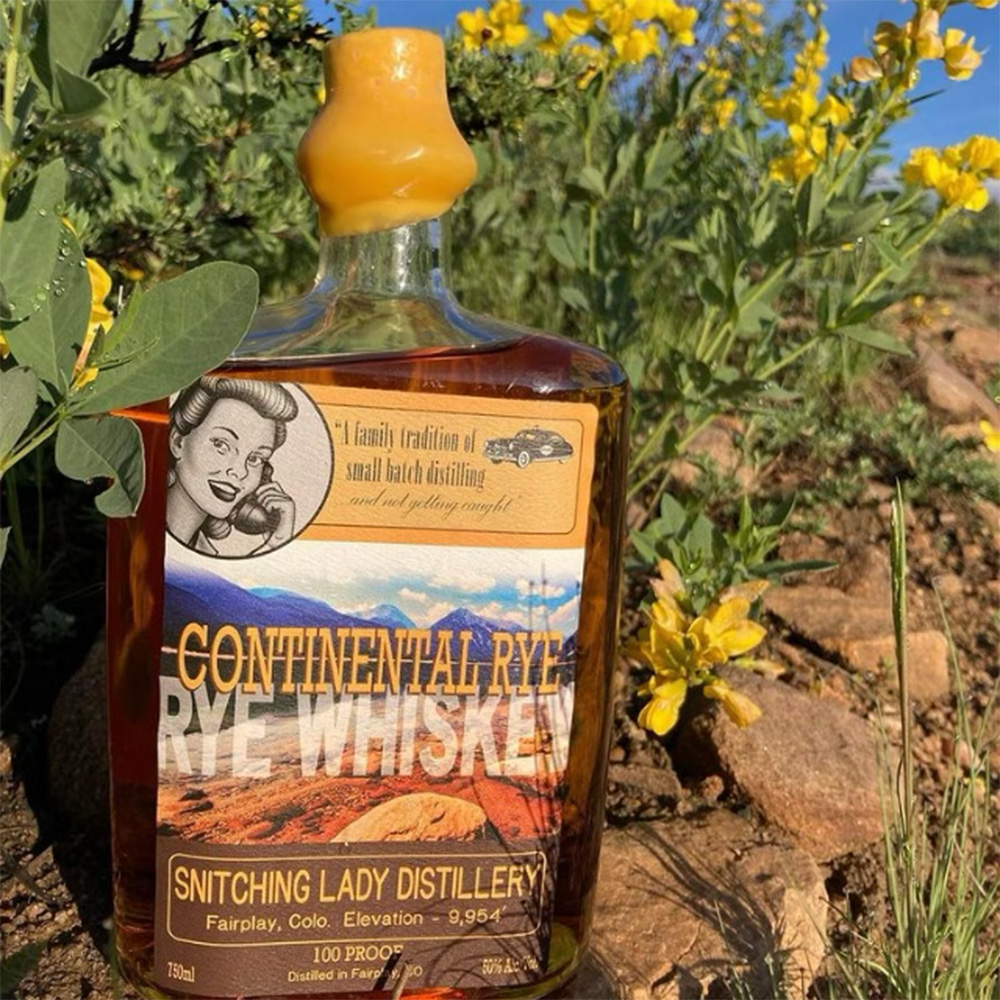
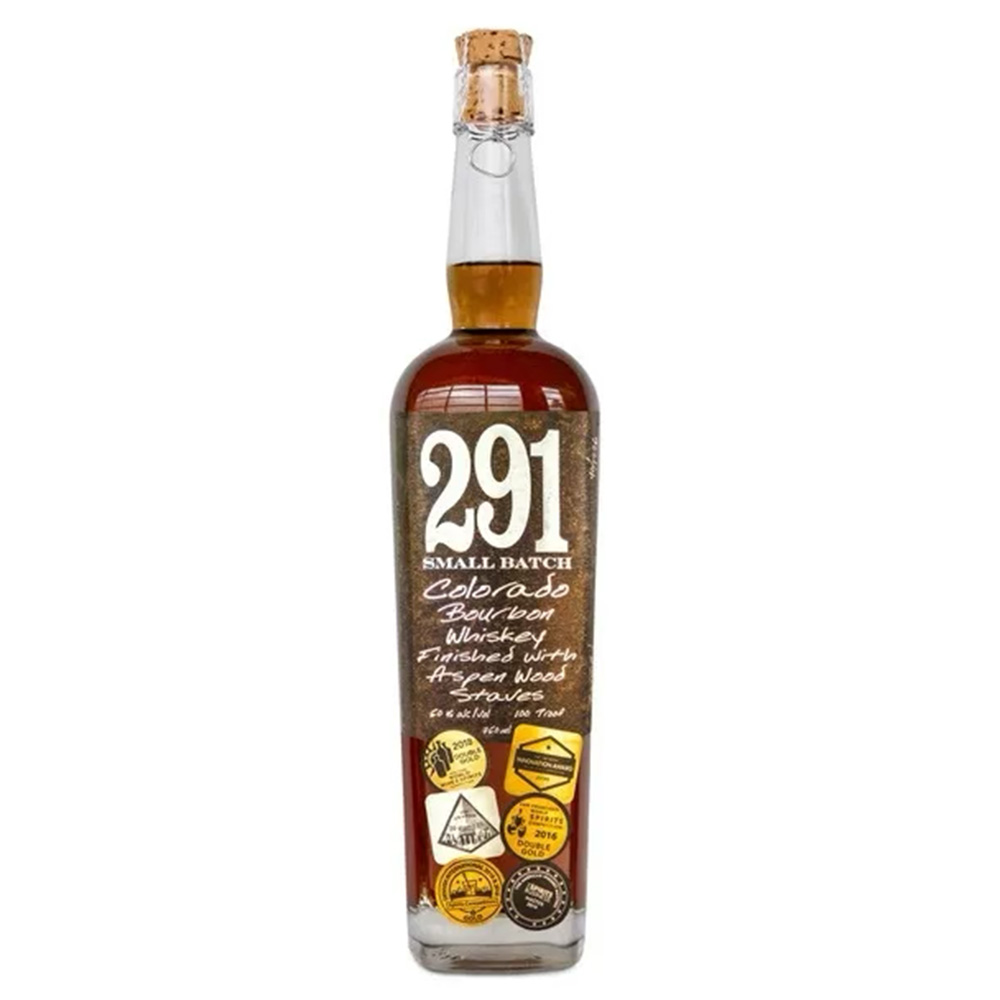
Distillery 291 Small Batch Colorado Bourbon Whiskey, 100 proof
$75
Noah Eckhouse: 291 does, in fact, ship their whiskey, so you can order for yourself, your family, and your lucky friends via their website. I am a fan of many of their products, but their small-batch bourbon, finished with Colorado aspen staves, is both local and unique. Contrary to some of the too-sweet, “easy drinking” bourbons out there, I’d say 291’s bourbon is whiskey for mountain people — picture a cowboy / cowgirl walking into a dusty saloon and ordering a shot at the bar. This bourbon is big, bold, and damn good with the right balance of heat, spice, and a little vanilla.
TempSafe Temperature-Regulating Phone Cases
MSRP: $30-40
Dylan Wood: My iPhone 12 Mini almost always died on cold ski days — until I started putting it in TempSafe’s “OG” phone case. Originally designed for use in a hot sauna, TempSafe’s neoprene-insulated phone cases also do a great job of keeping your phone warm while it’s very cold outside.
These cases are also great at their original intended use (keeping a phone from overheating in a very hot environment), and I regularly bring it into a sauna so I can keep myself entertained with a podcast while I sweat. Plus, these cases offer some padding if you happen to fall with your phone in your pocket on the hill.
The “OG” model is great for those who prefer to stash their device away, while the “Scroller” allows you to use your phone while it’s in the case. Either way, one of TempSafe’s phone cases makes for a great gift for anyone who is tired of their phone overheating or getting its battery drained by the cold. If you have a ski, snowboard, snowmobile, or sauna buddy who you’re tired of being unreachable due to a dead phone, a TempSafe case could be of great value for both the giver and recipient.
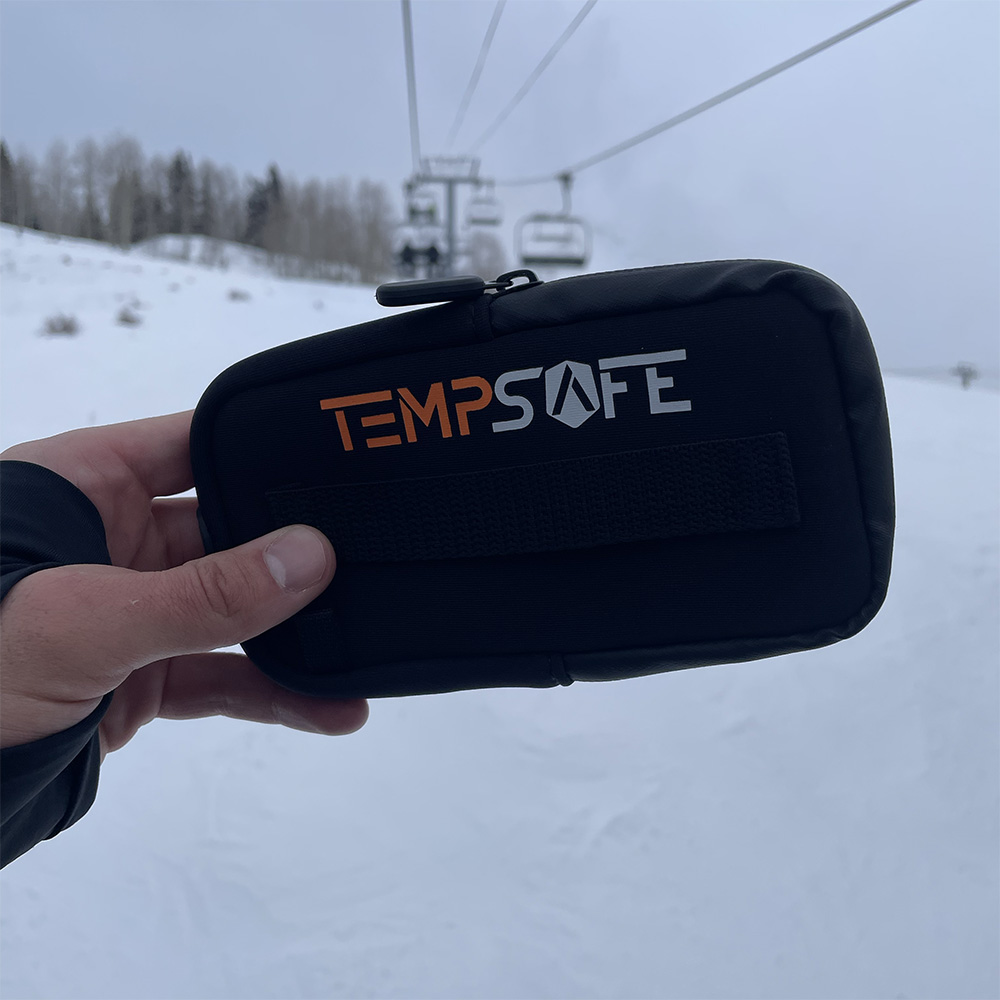
Sea to Summit Telos TR2 backpacking tent
MSRP: $599 (on sale for $449 at time of writing)
Jed Doane: A well-designed backpacking tent, if taken care of, can be a gift that lasts for years. My first tent was a gift from my dad and it held up for almost a decade. This option from Sea to Summit has been very impressive after a summer of testing.
The Telos is packed with thoughtful design while still focusing on lightweight performance. It’s built from premium materials, including DAC poles and no breakable plastic buckles. It’s not the lightest tent on the market, at 3.68 lb / 1.67 kg packed, but the experience and features (in my opinion) make that extra weight worth it.
Every detail seems to be thought out. It’s easy to pitch (in part thanks to color-coded sides), and there are multiple pitching options. You can go fly-only or, with the addition of trekking poles, opt for a shade-like Hangout Mode that fits camp chairs underneath.
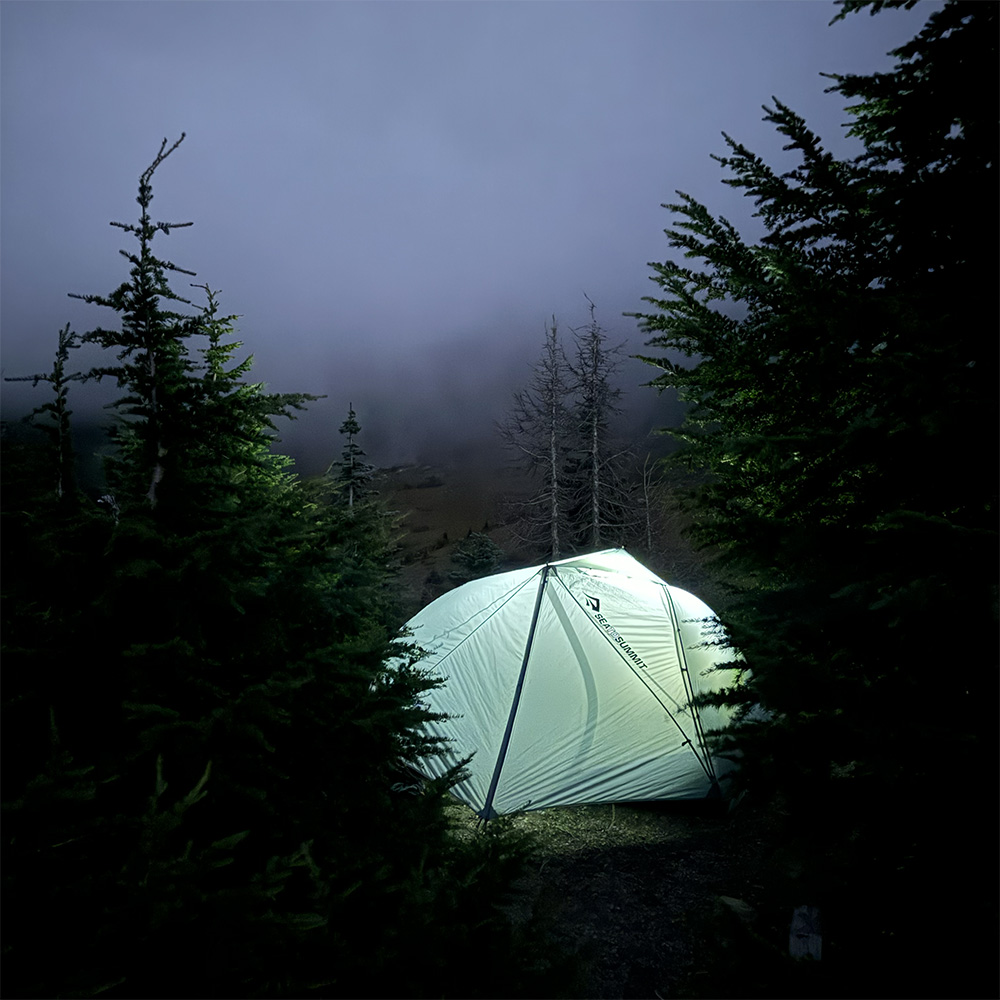
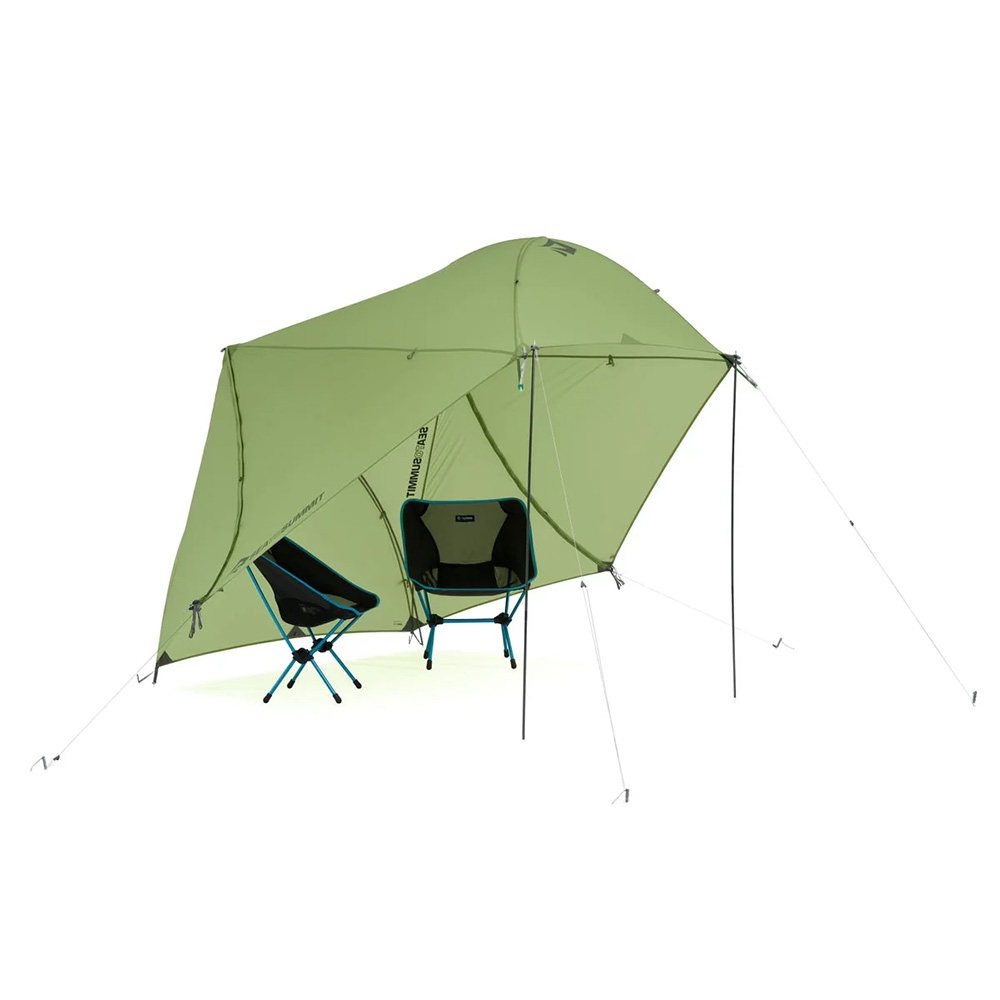
I really appreciate the packing design, which separates the fly, tent, and poles. This makes it easy to split weight between backpacking partners, and it importantly isolates a wet fly from the rest of the tent, which has made a noticeable difference in my quality of life while backpacking in the Pacific Northwest. As a taller guy, I also love the roomy headspace in the Telos (52” / 132 cm listed maximum height). The ventilation system is adjustable for different weather conditions, which really helps for questionable weather nights. On top of all this, Sea to Summit offers a lifetime warranty, which, for me, is always a plus with big purchases.
GREAT COFFEE BEANS
Jonathan Ellsworth: By now, you probably know that I have gone way, way down the coffee rabbit hole. And while I love the fact that there are numerous ways to brew really great coffee (and those ways range from quite cheap to mind-blowingly expensive), I’d really love to get more and more people buying good beans from great roasters.
For now, I’ll suggest just two roasters whose coffee I have been sampling a lot of recently, and enjoying quite a bit:
Calibration Coffee Lab, Greenville, South Carolina
Alex LeBlanc is a trained engineer that, two years ago, took his engineering obsessiveness — and home coffee-rosting hobby — and started Calibration Coffee Lab. I’ve now had Alex twice on our CRAFTED podcast, and if you listen to those conversations, you’ll get to hear Alex’s journey from starting up to where he is today. And I can vouch — the very-small-batch amounts of coffee he is putting out are very good.
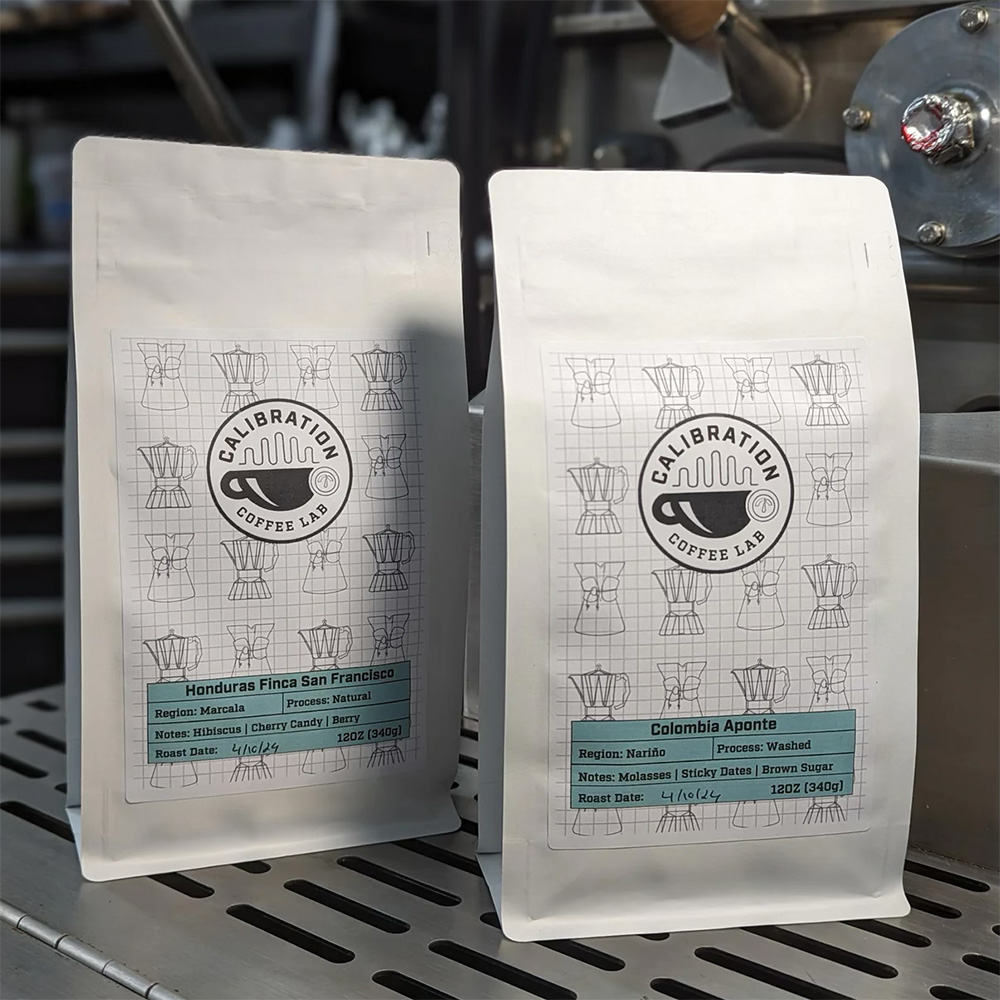
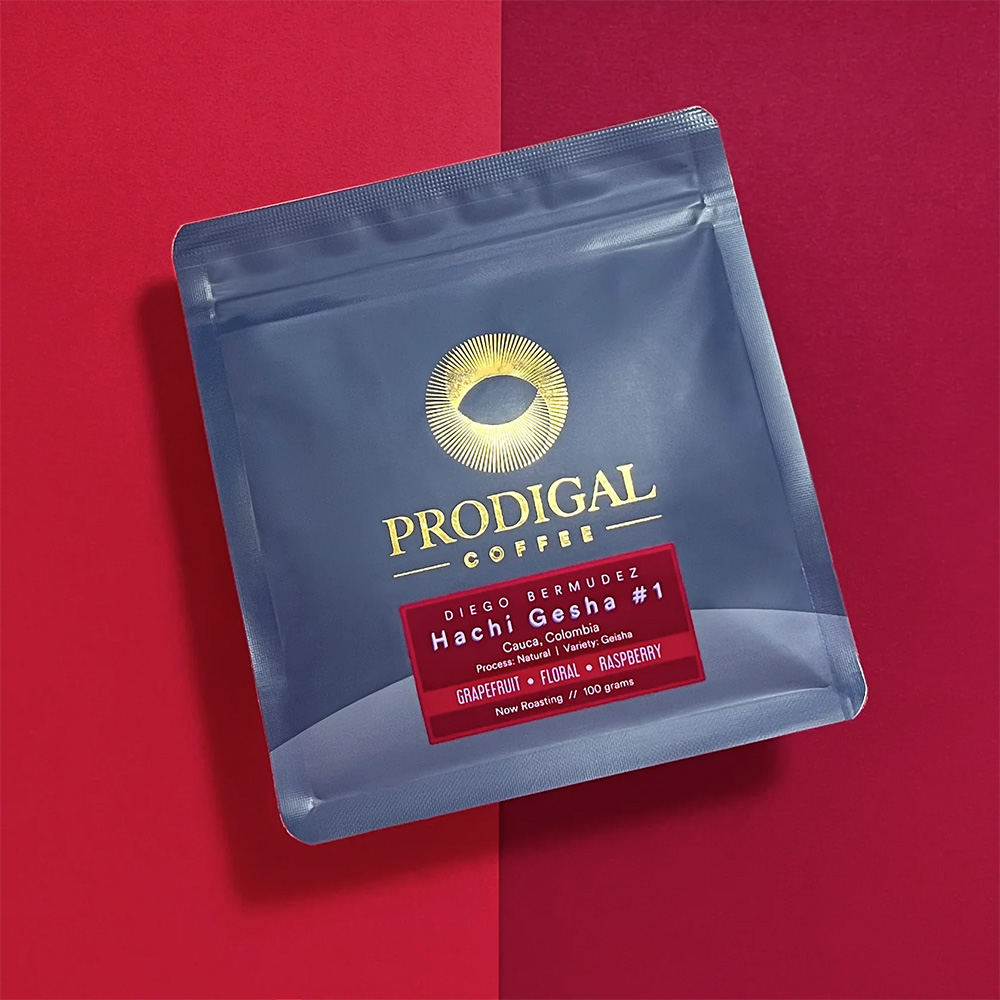
My recommendation? Gift the coffee drinker in your life a subscription to Alex’s coffees, and let them see what they think. Or, you could also let them contact Alex (tell them I said it was okay to do so), and I’m sure Alex would be happy to hear what their preferences are like, and which coffees of his would be the best match.
Prodigal Coffee, Boulder, Colorado
Prodigal’s co-founder, Scott Rao, is one of the top people in the world when it comes to researching and writing about coffee roasting, coffee brewing, and more. (No exaggeration here, do yourself a favor and check out Scott’s free blog. Or, subscribe to our CRAFTED podcast, where Scott will be coming on for a conversation with me in a couple weeks.)
Simply put, Prodigal is trying to put out some of the very best coffee you can find. Of course, that means that it is not cheap. But for anyone who appreciates the pursuit of absolute excellence, well, Scott and his Prodigal co-owner, Mark Benedetto, are obsessed with that pursuit.
Here’s one Prodigal offering that’s become a favorite of mine. Check it out, but also see if some other Prodigal offering grabs your interest.





